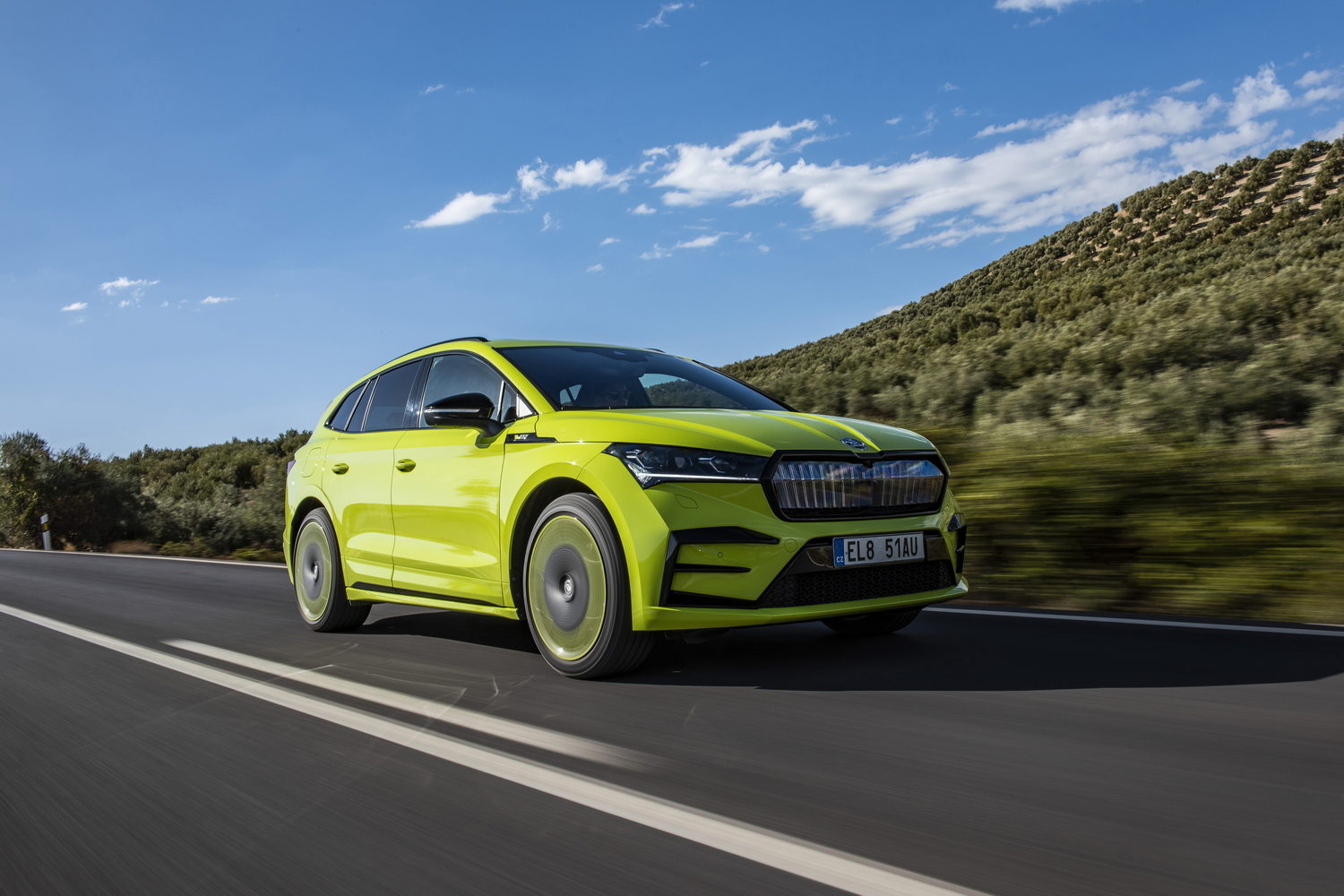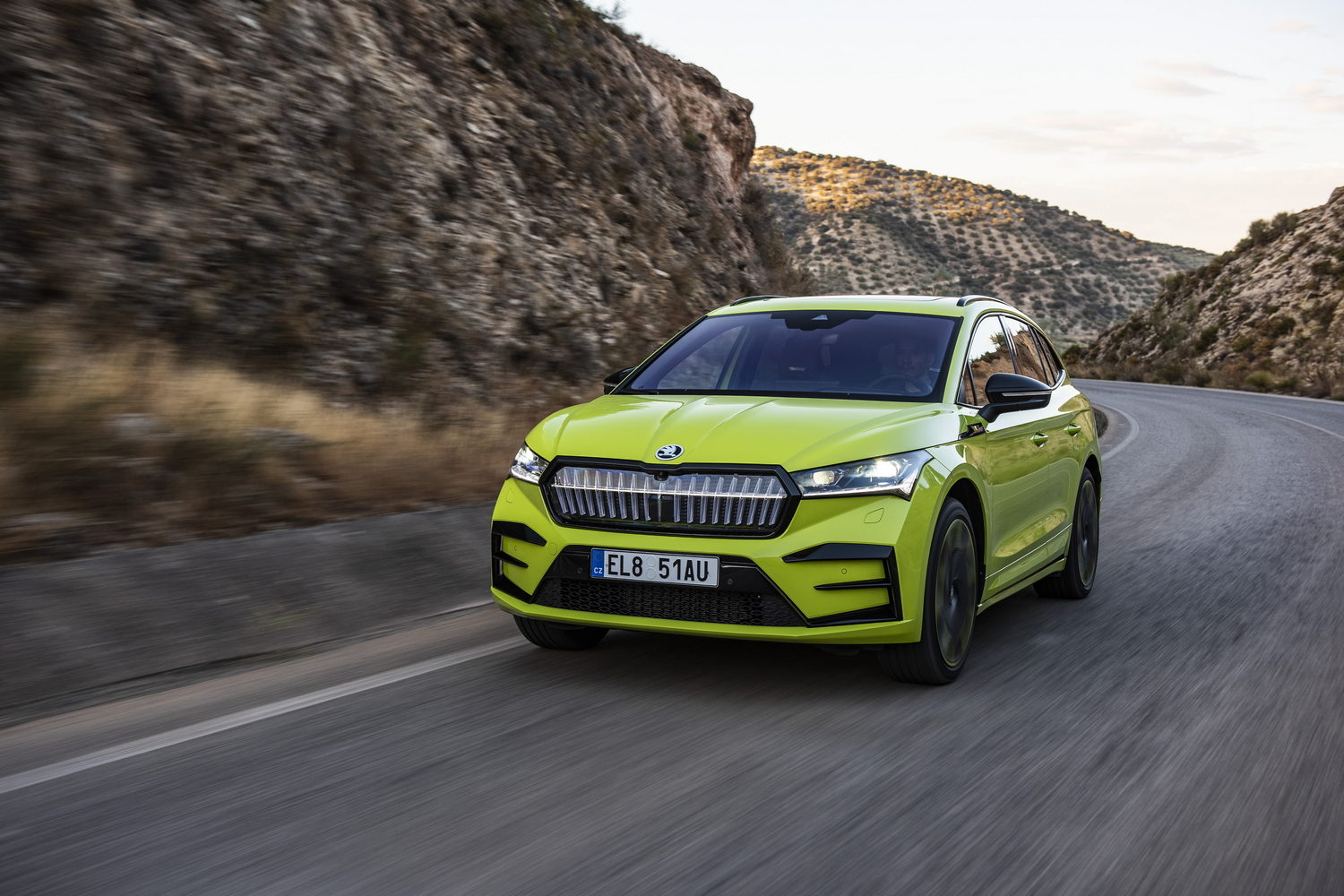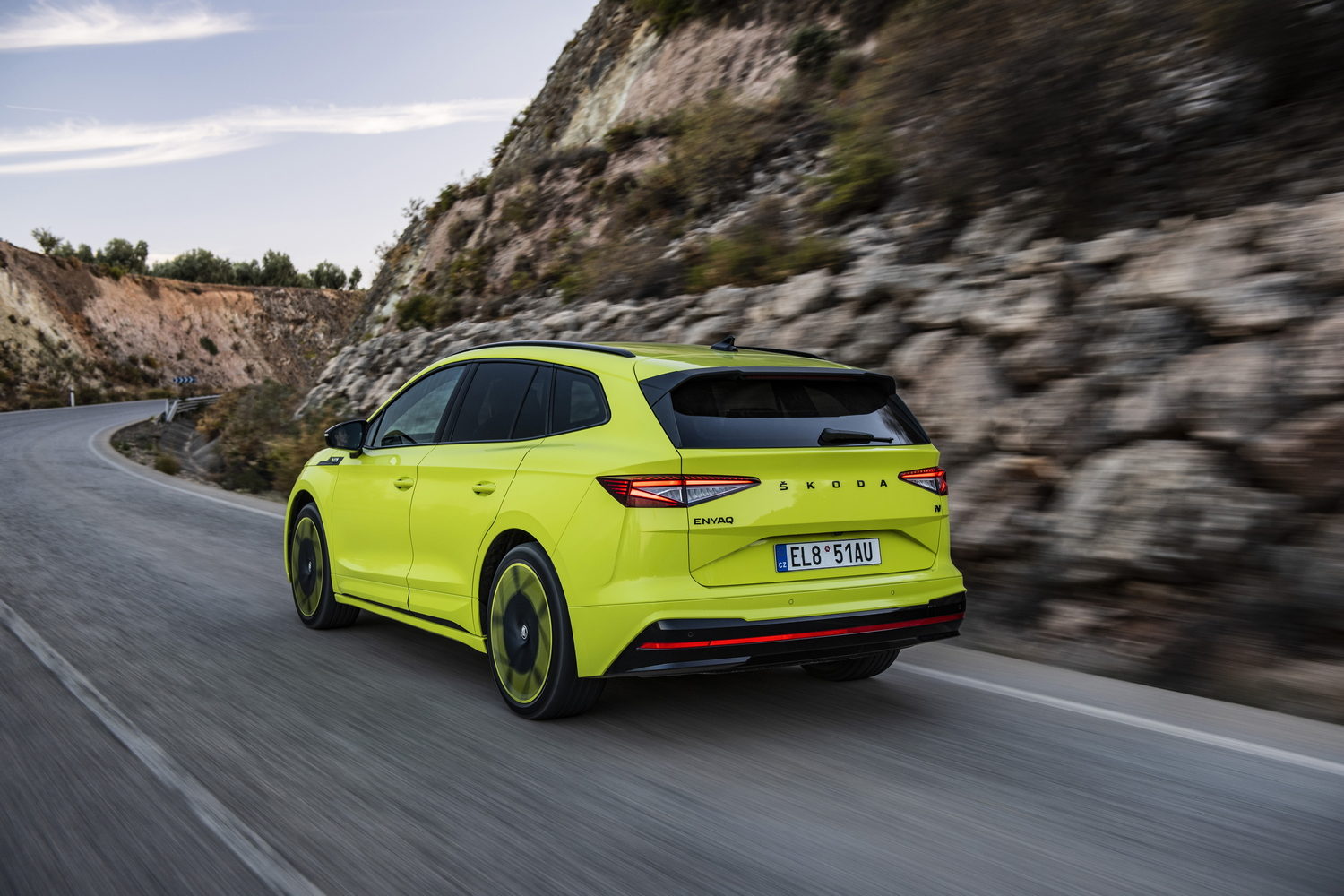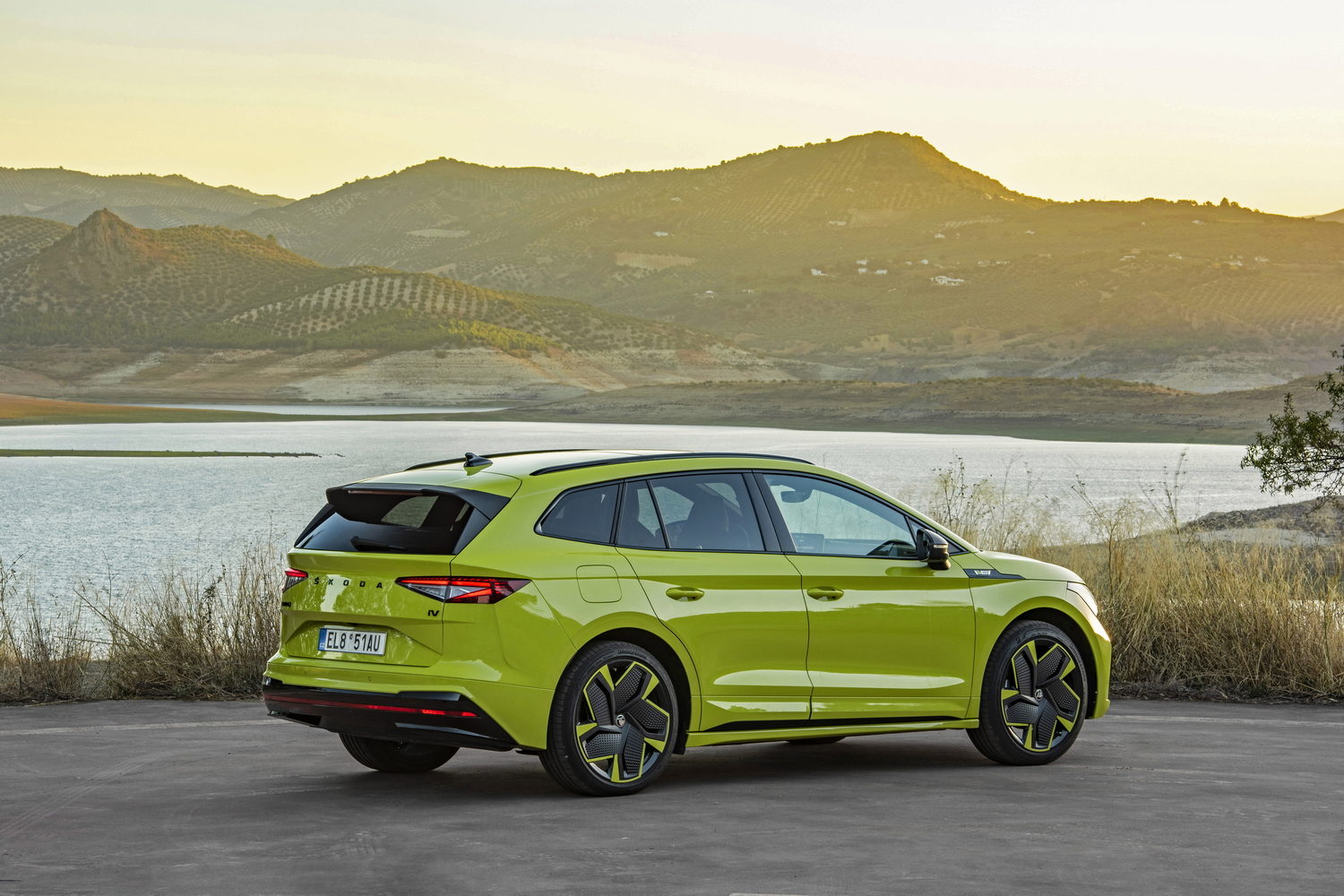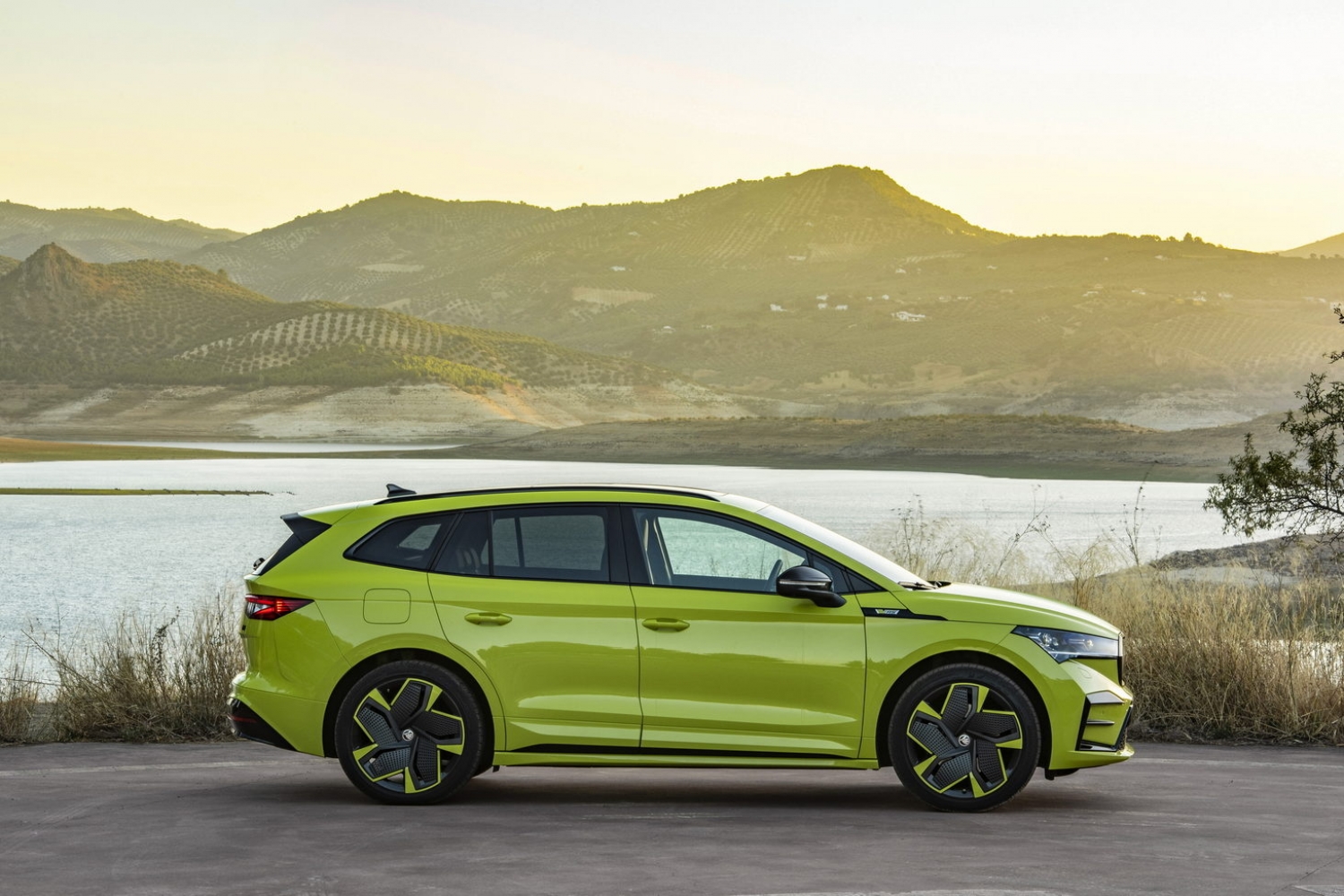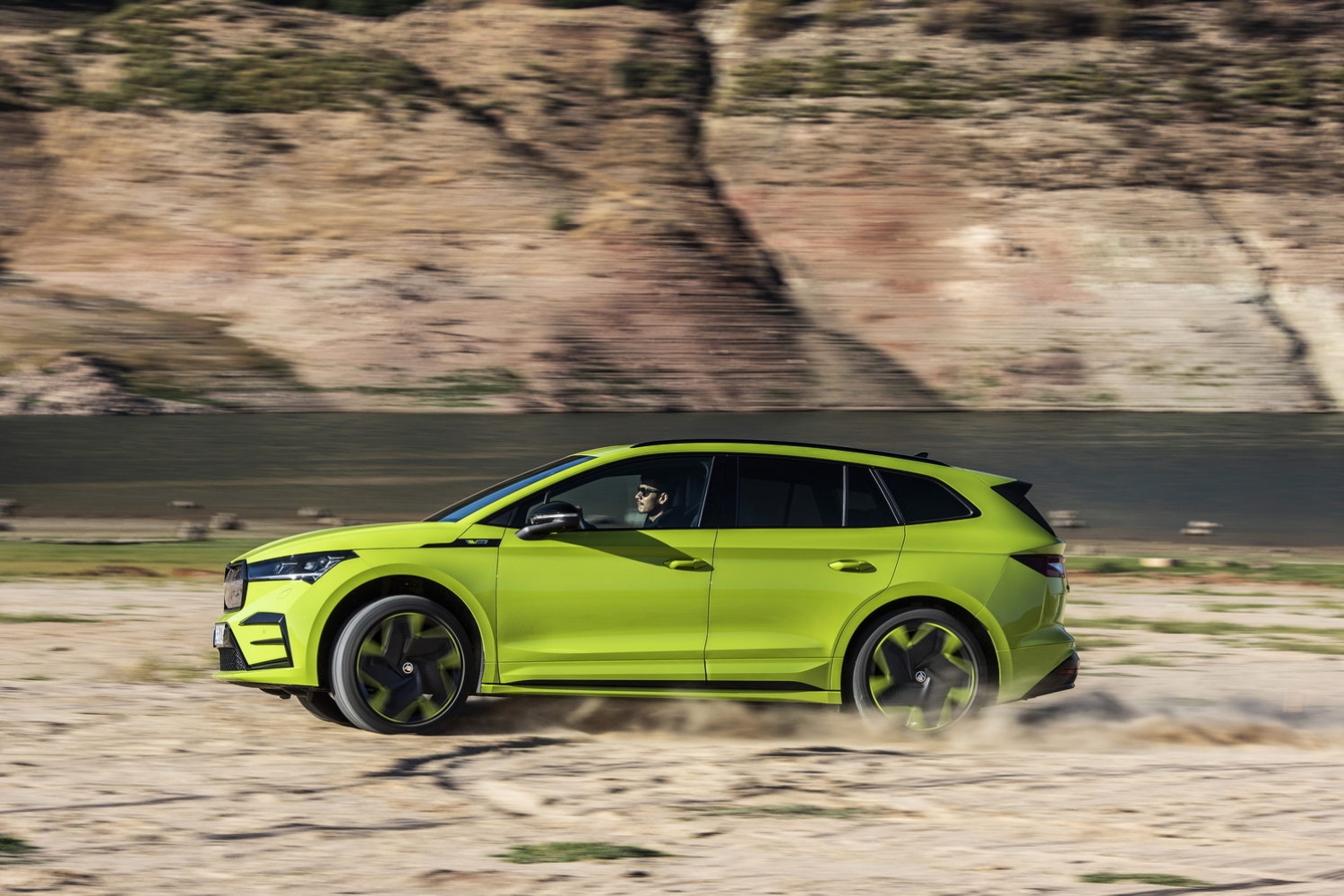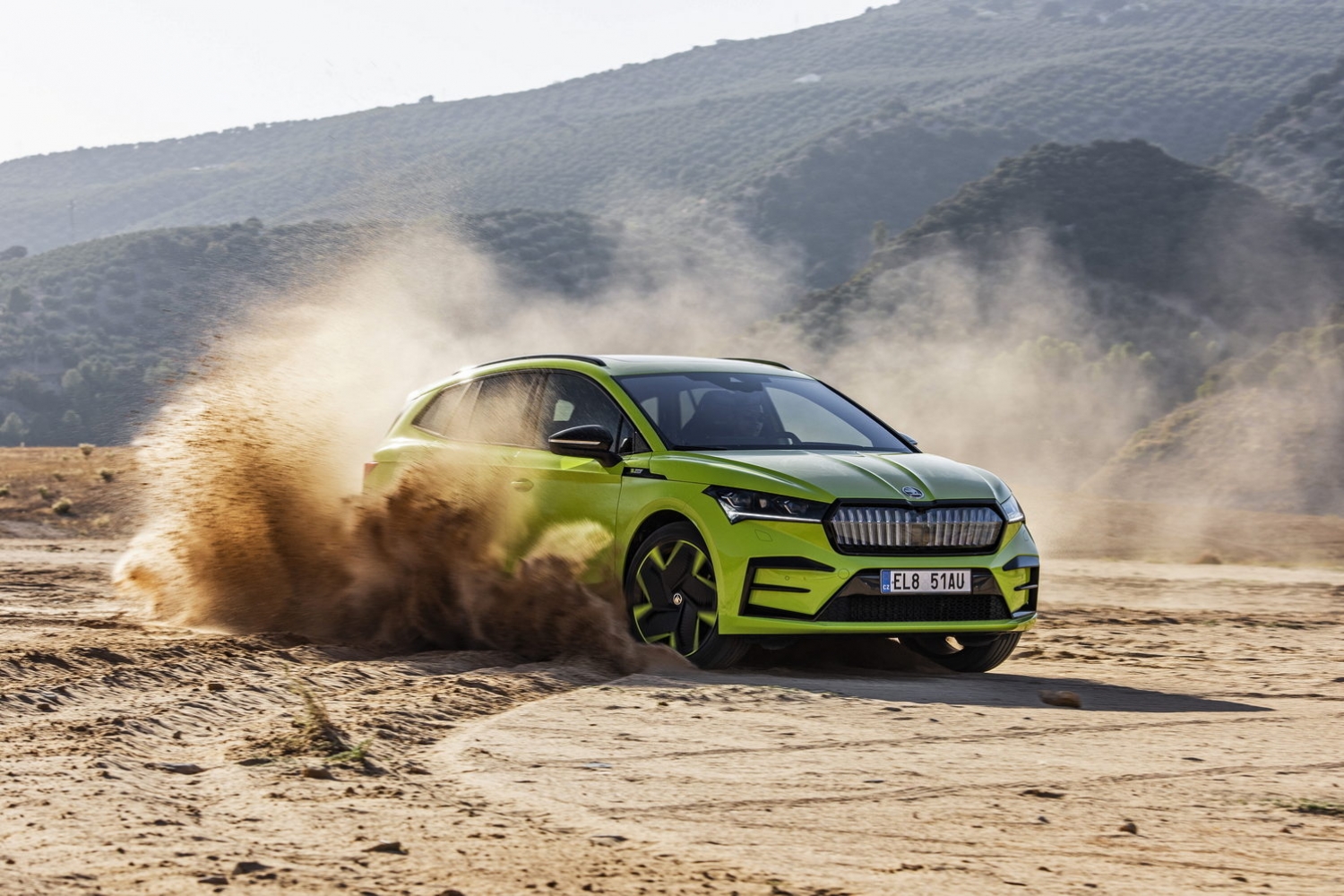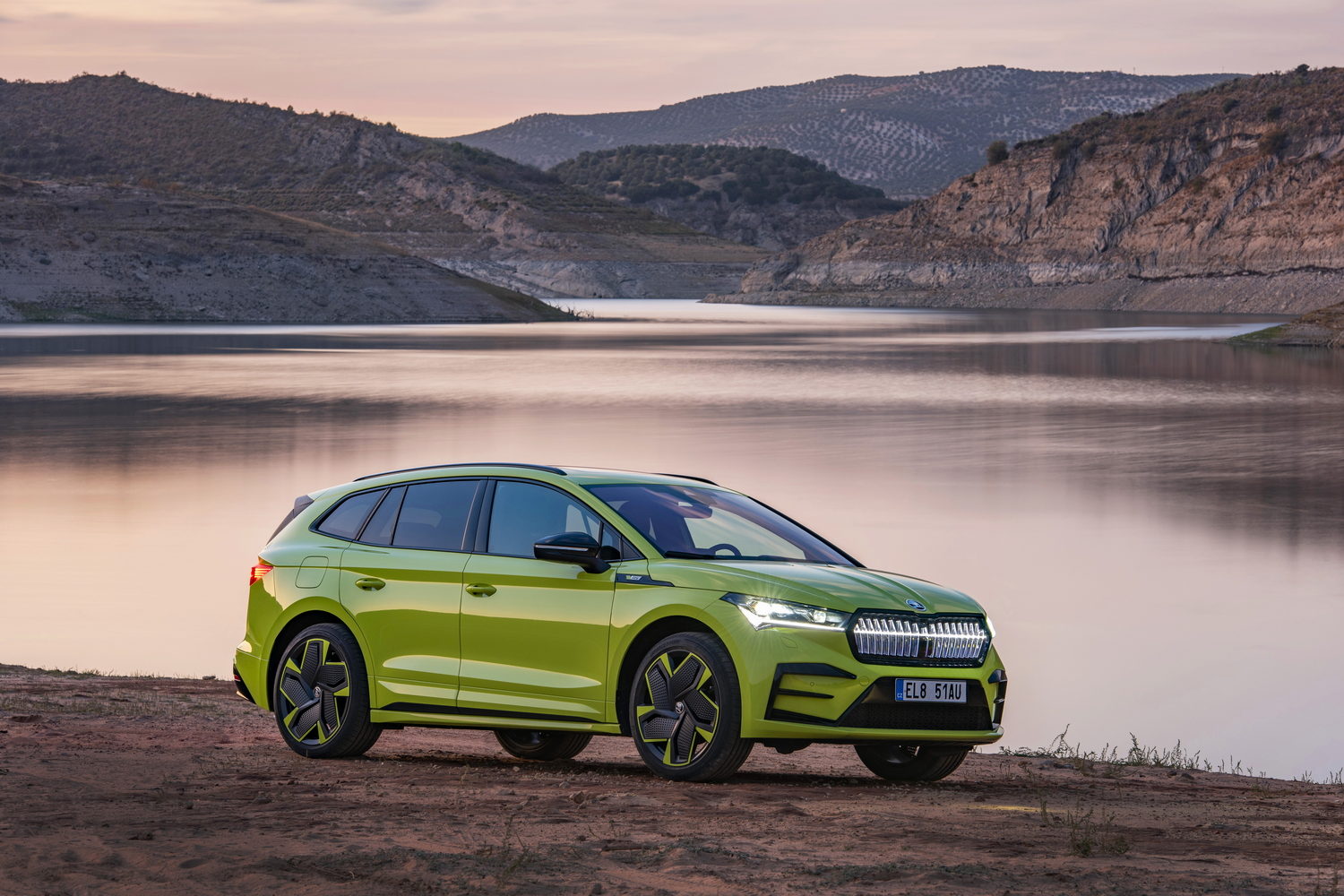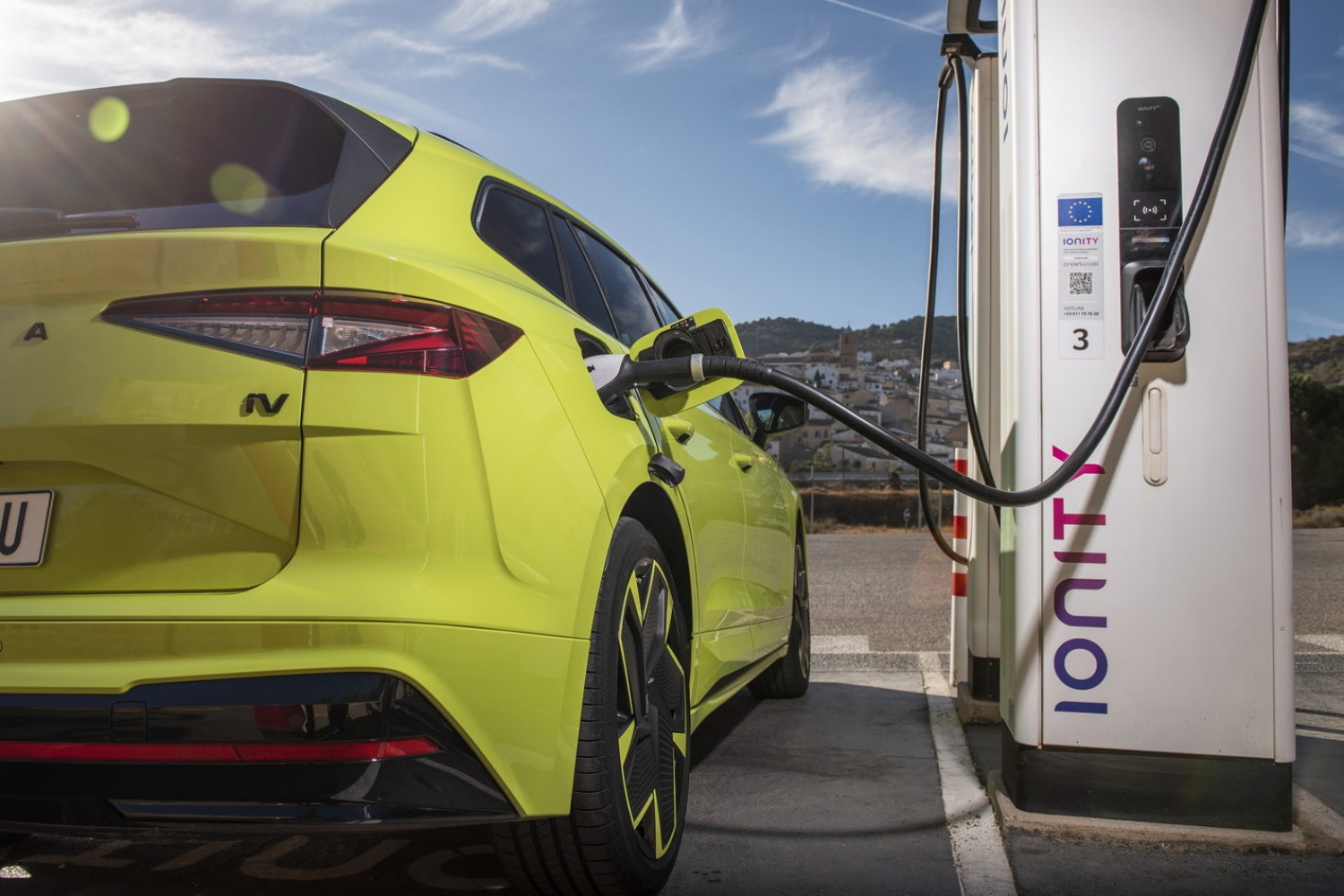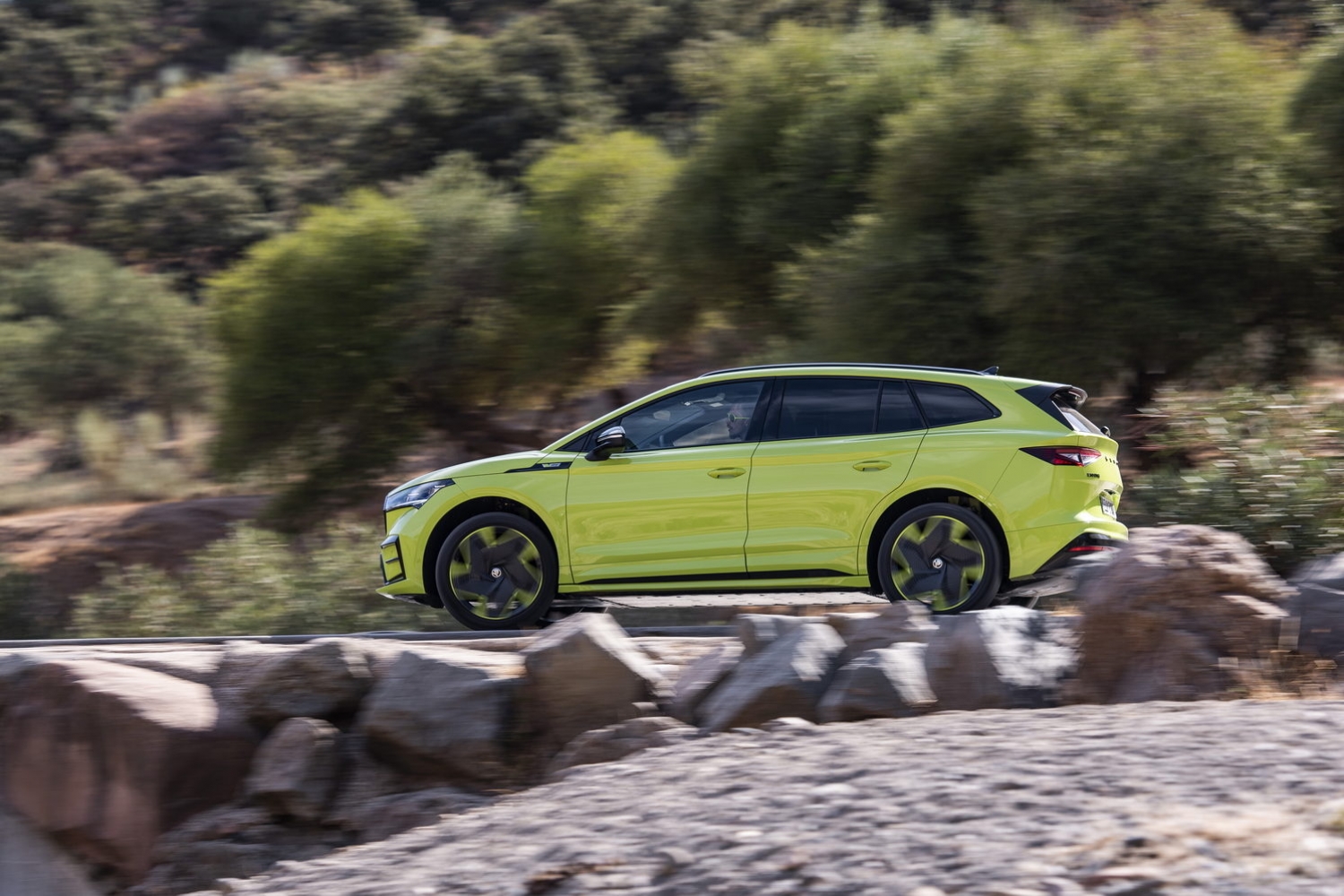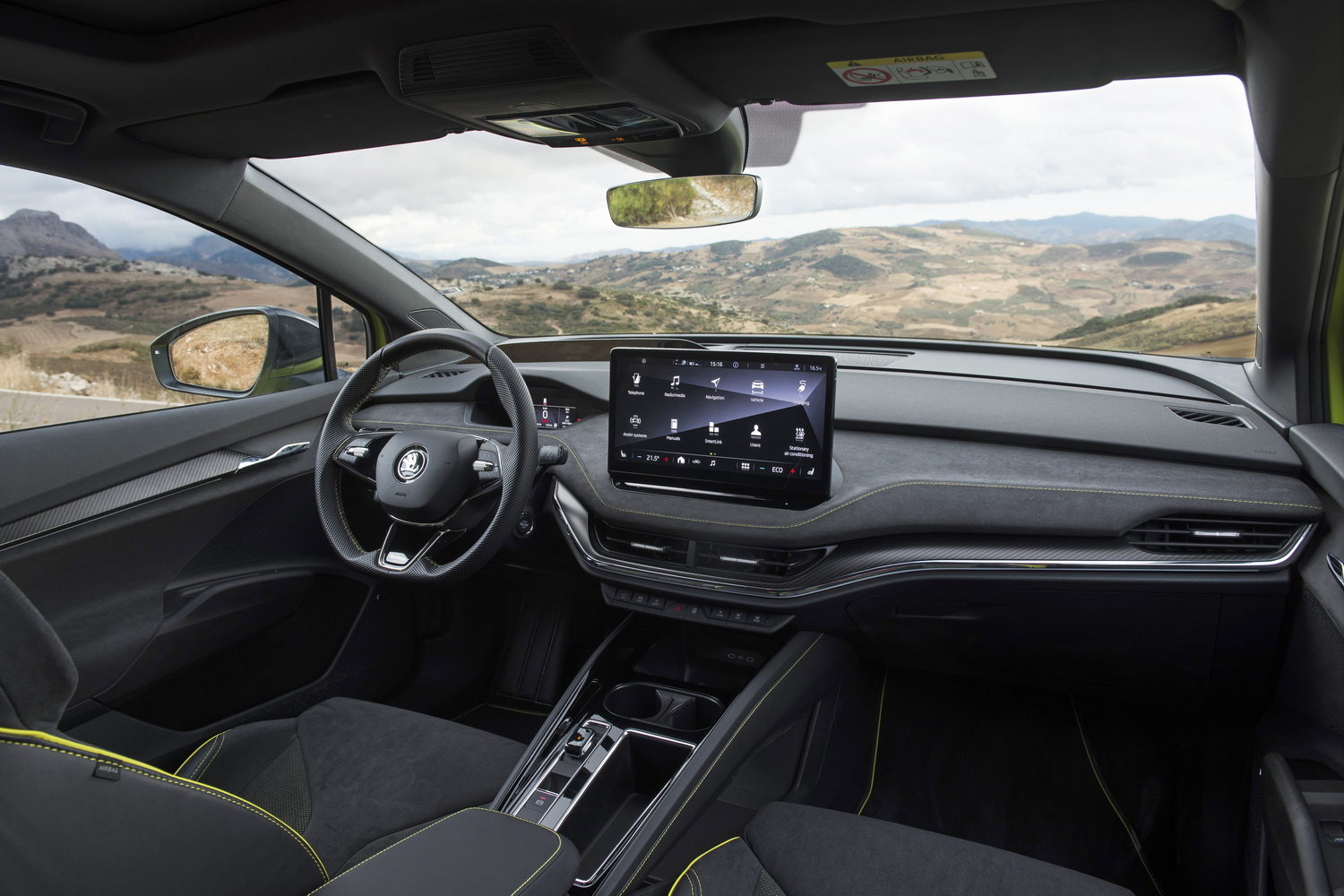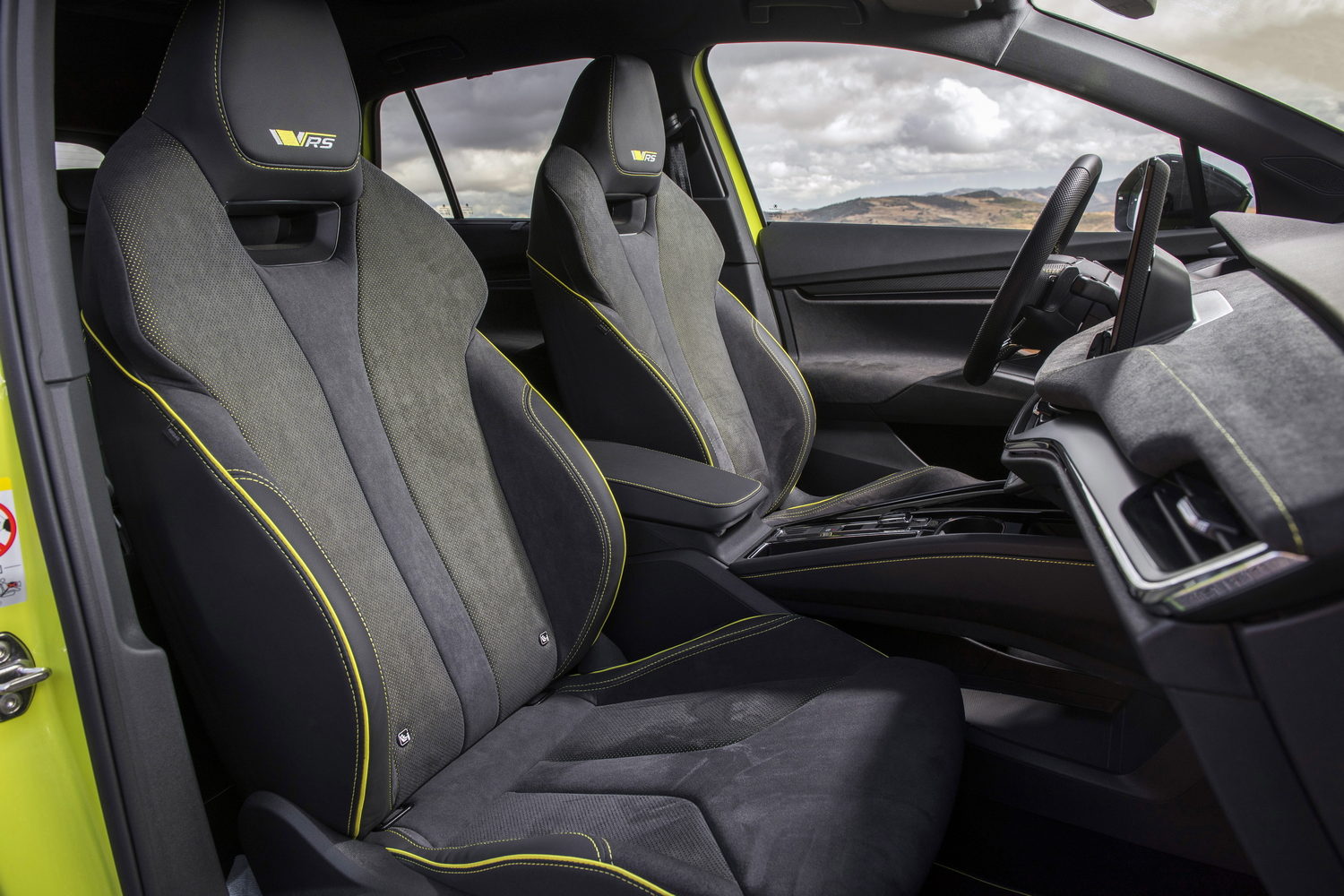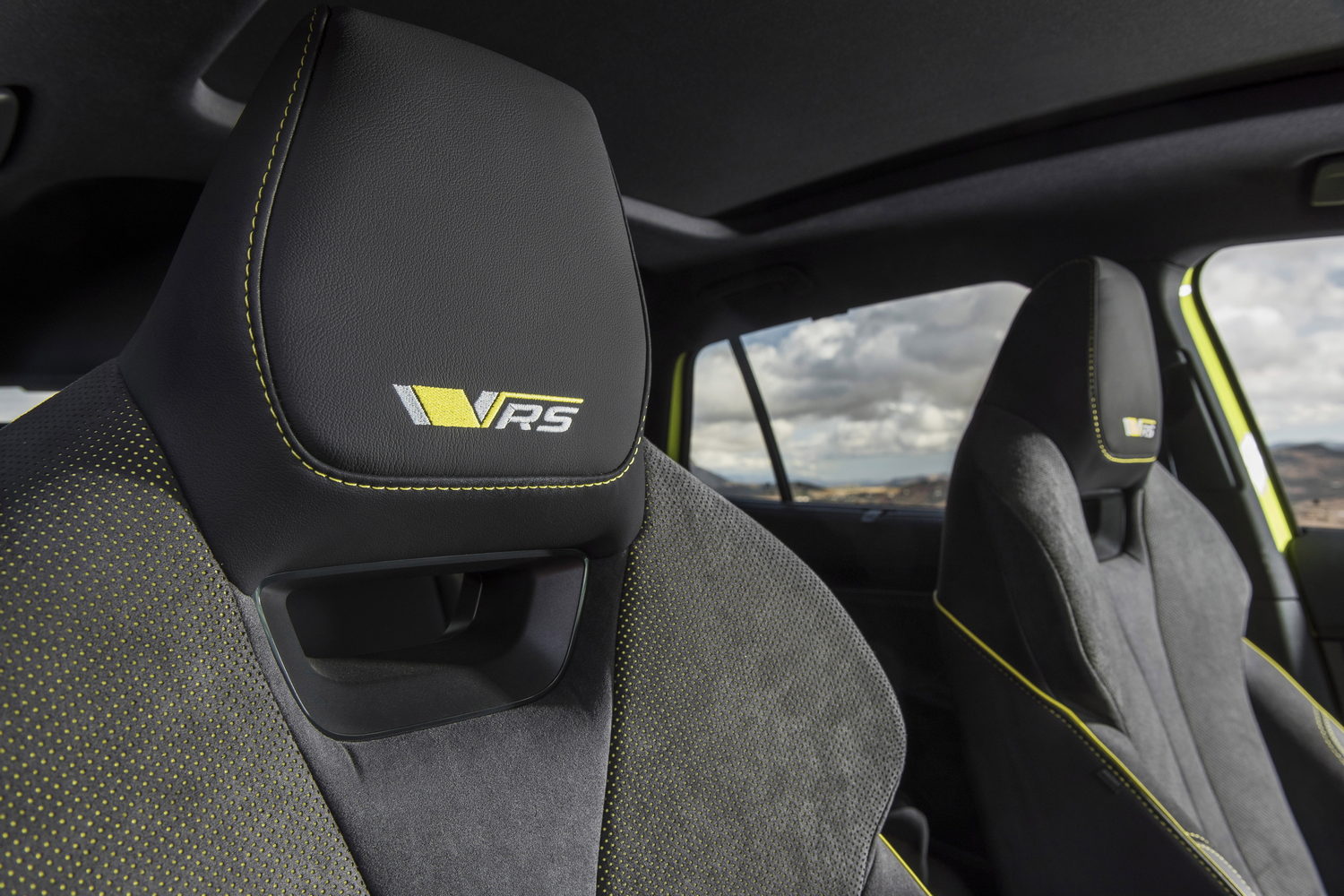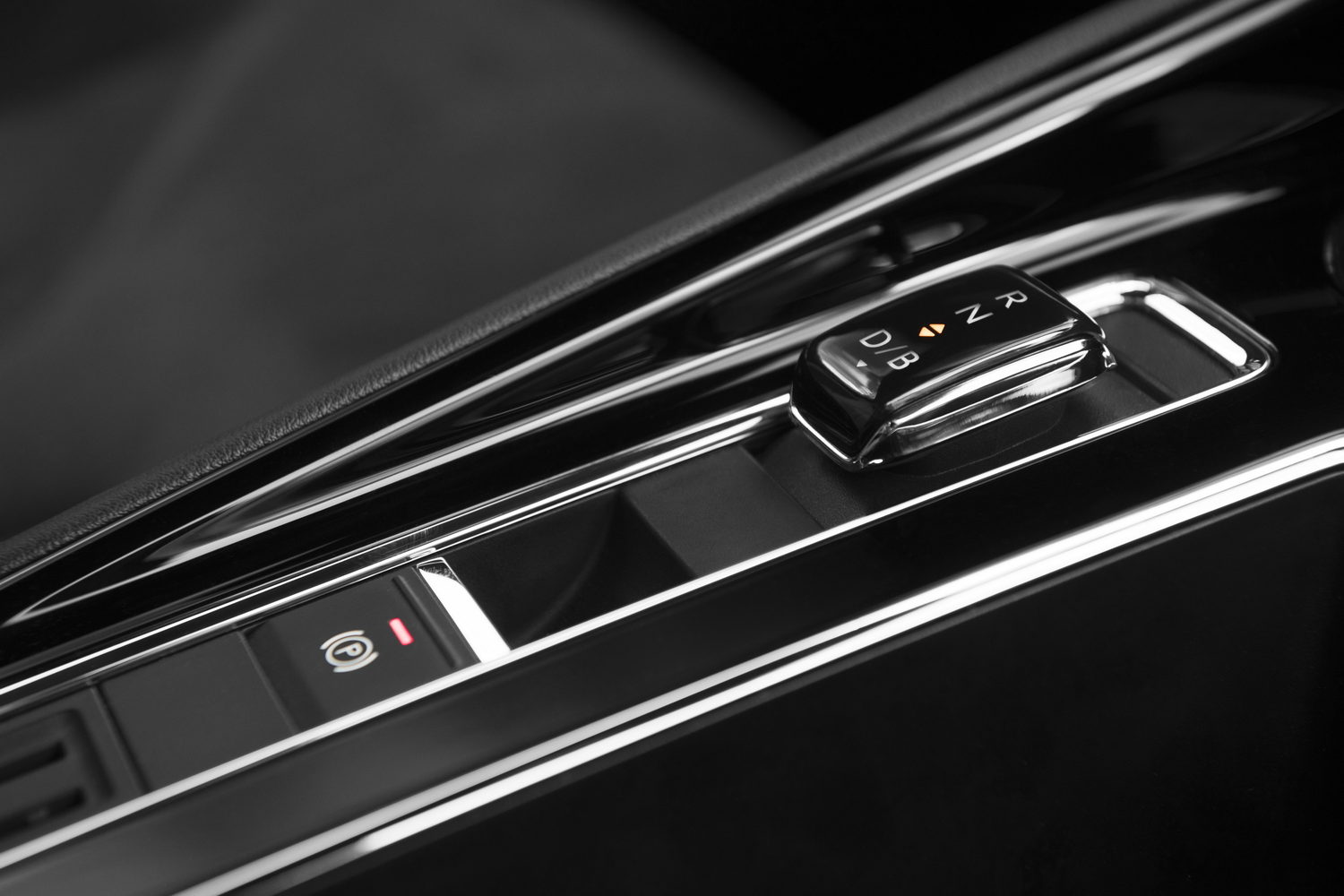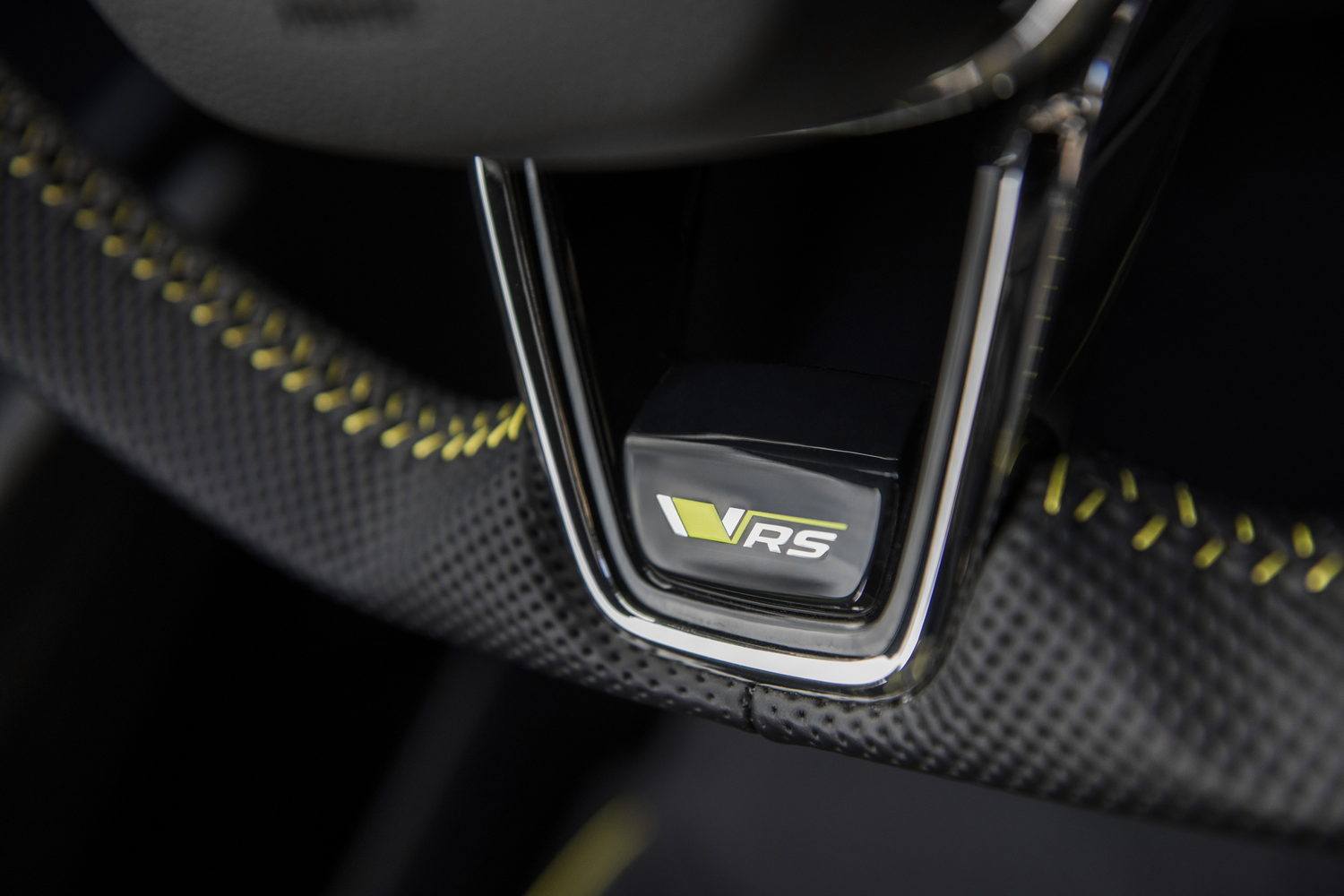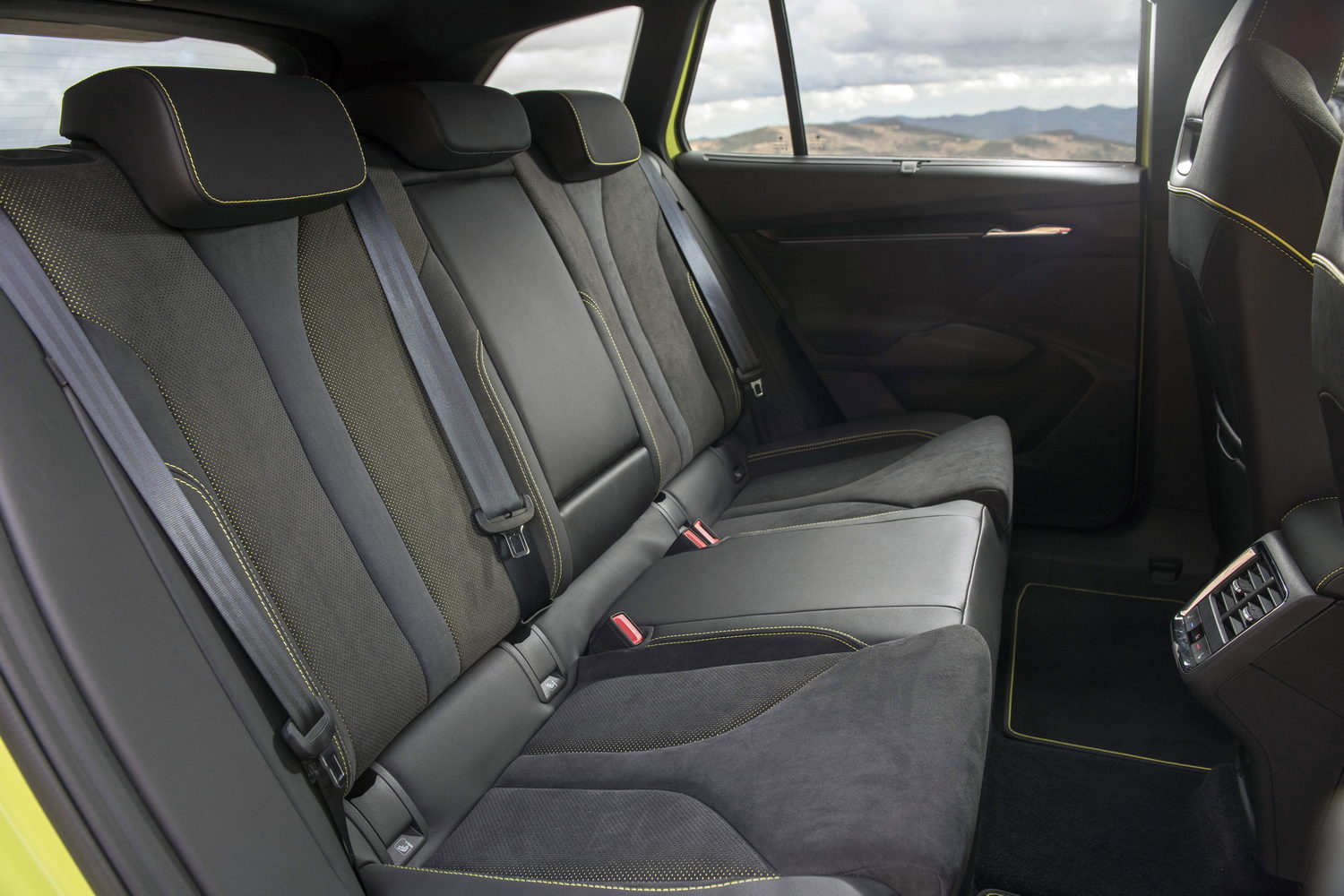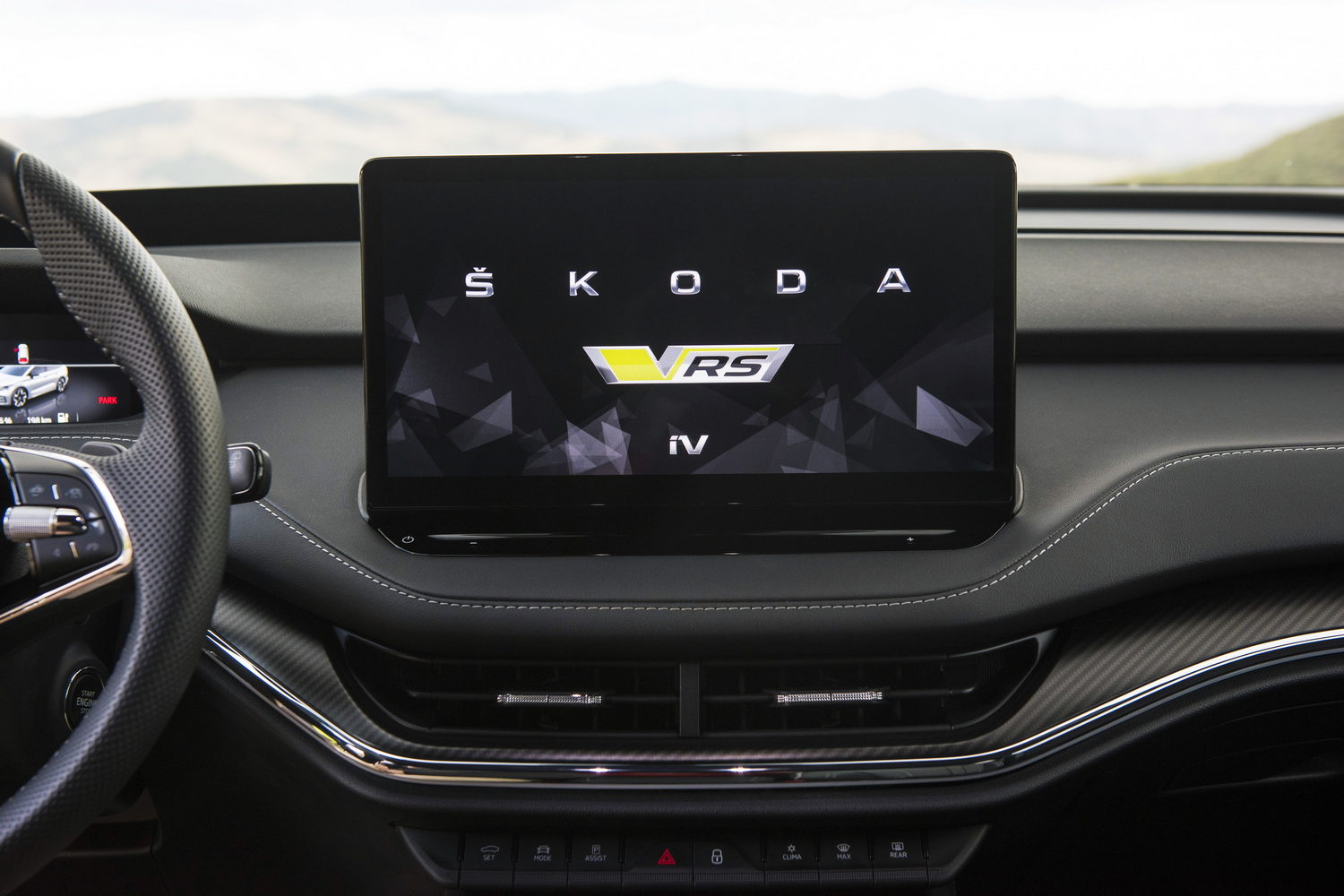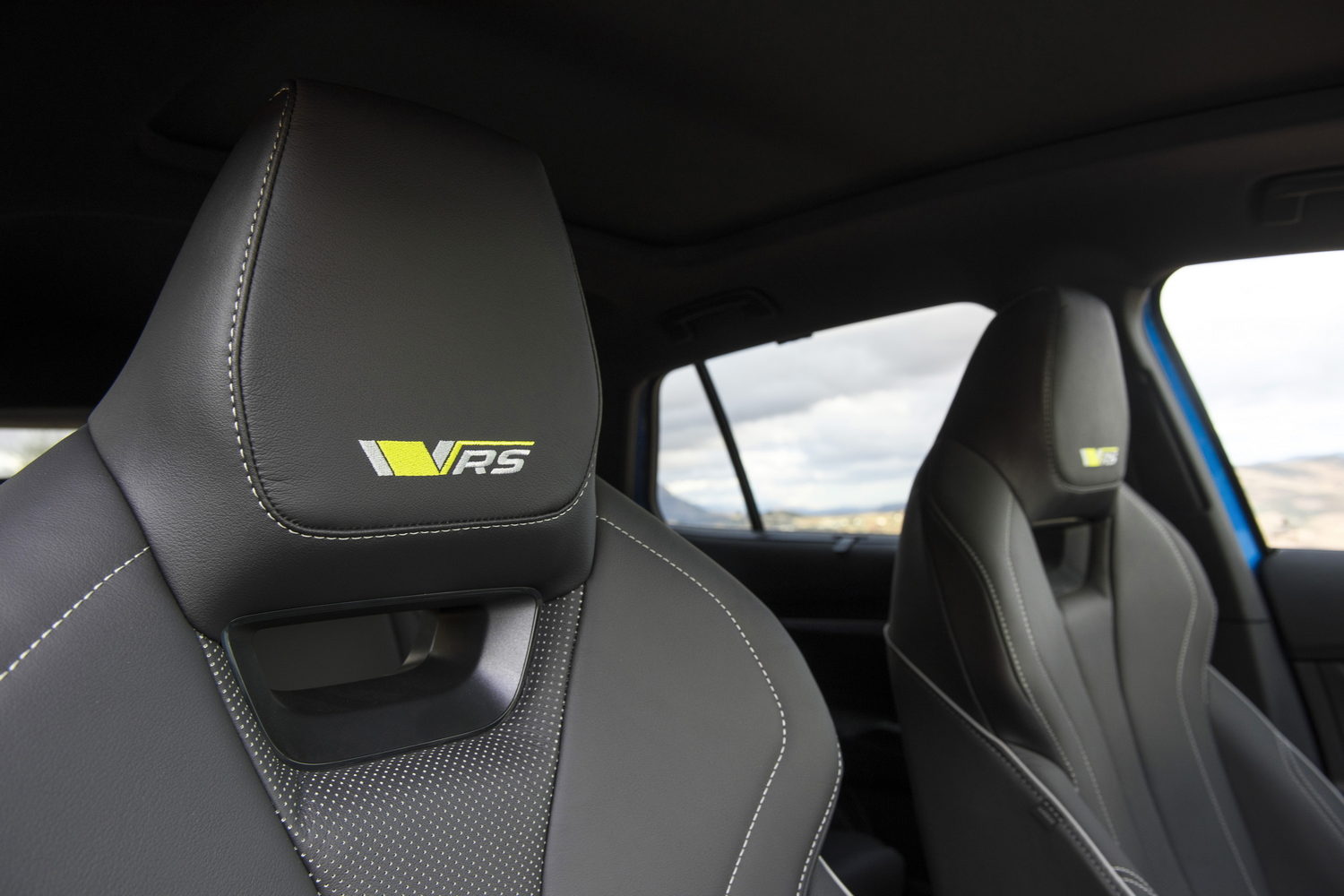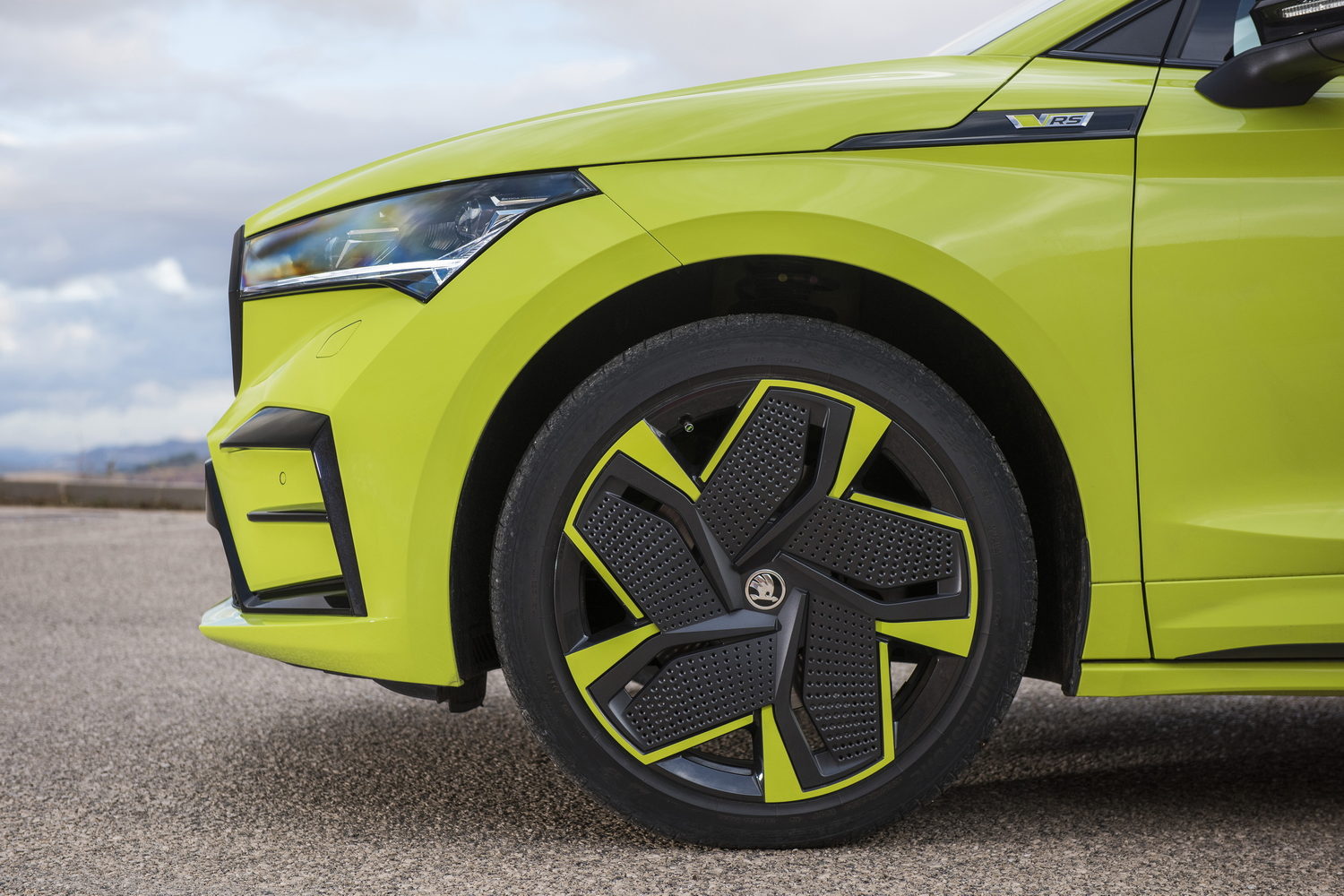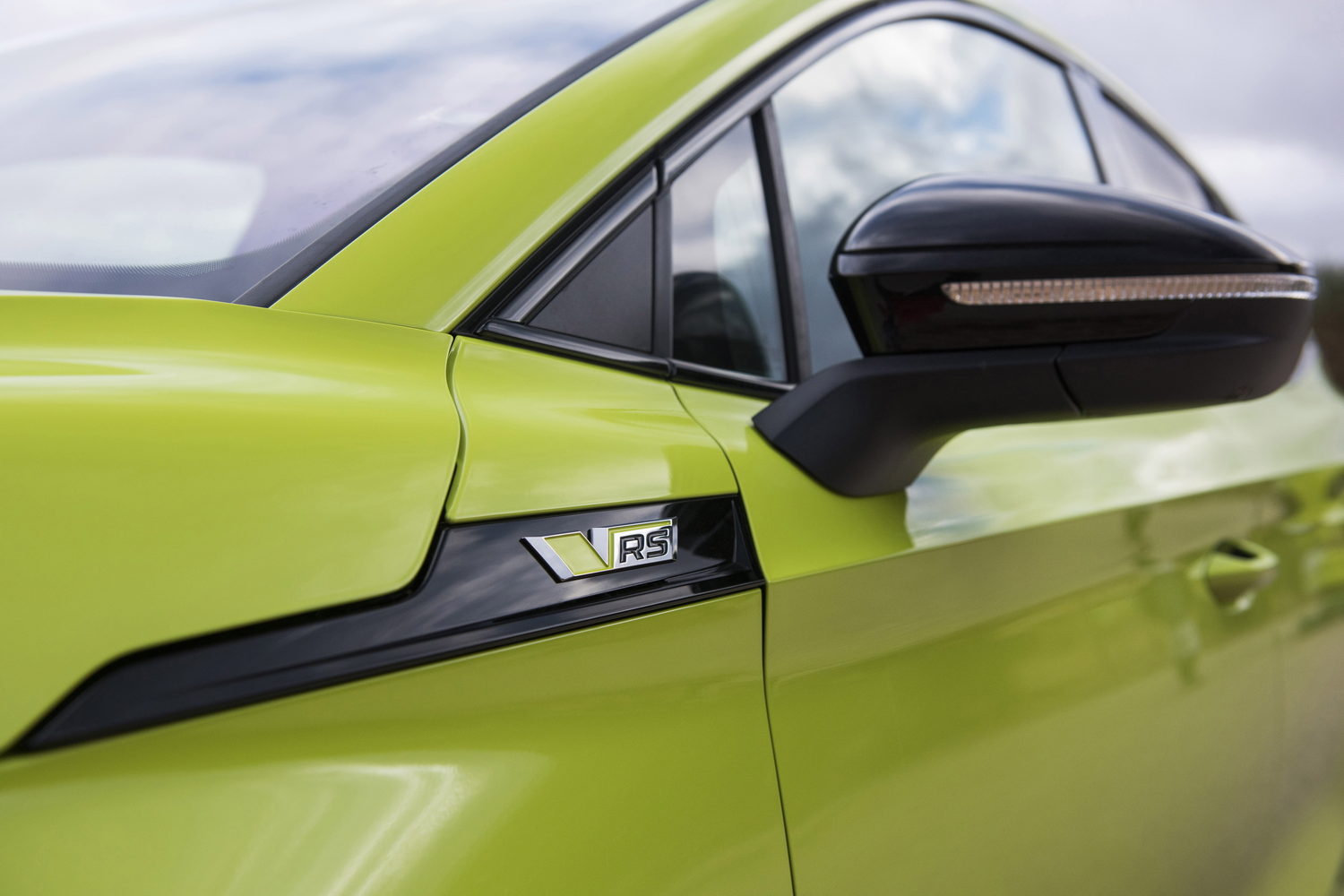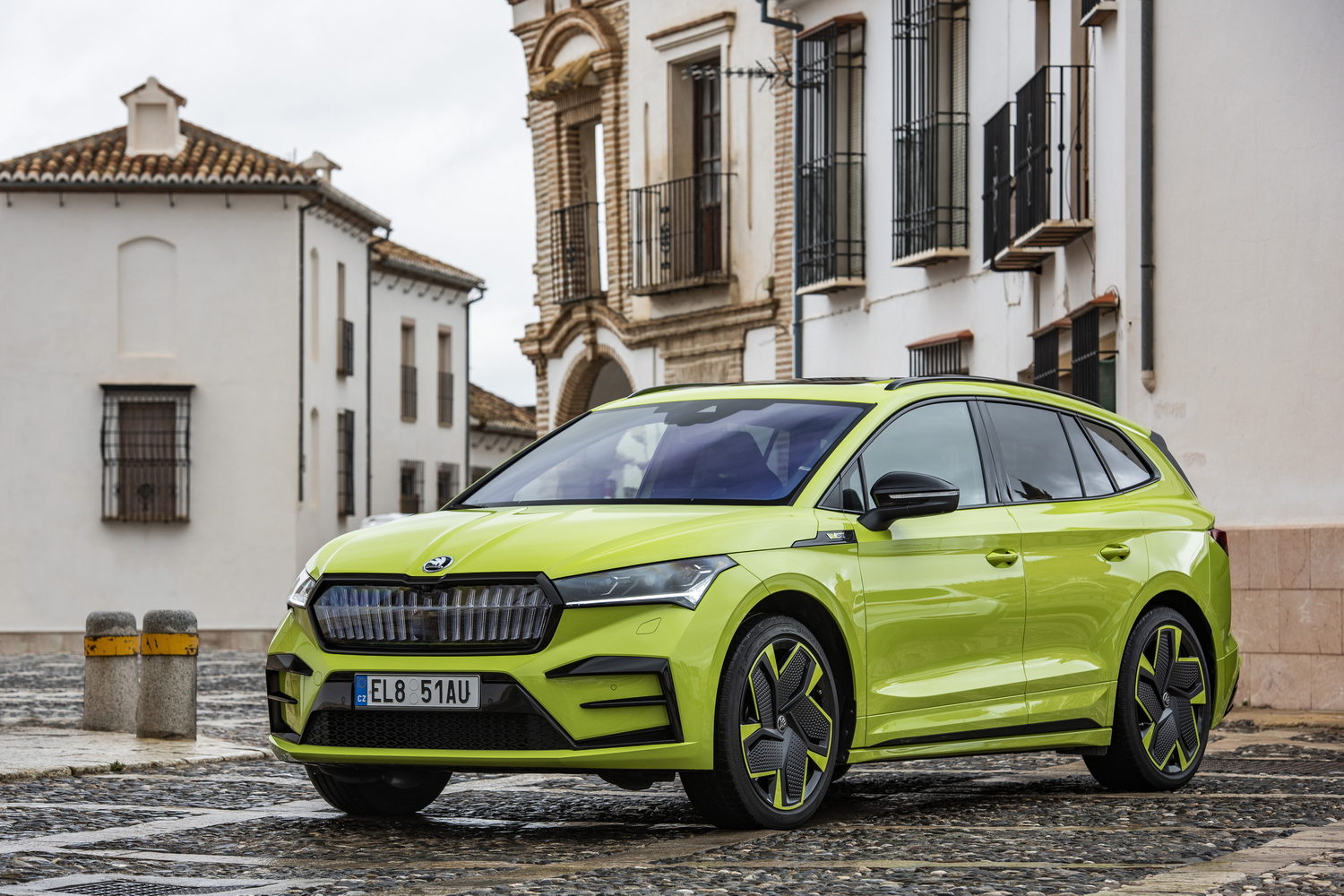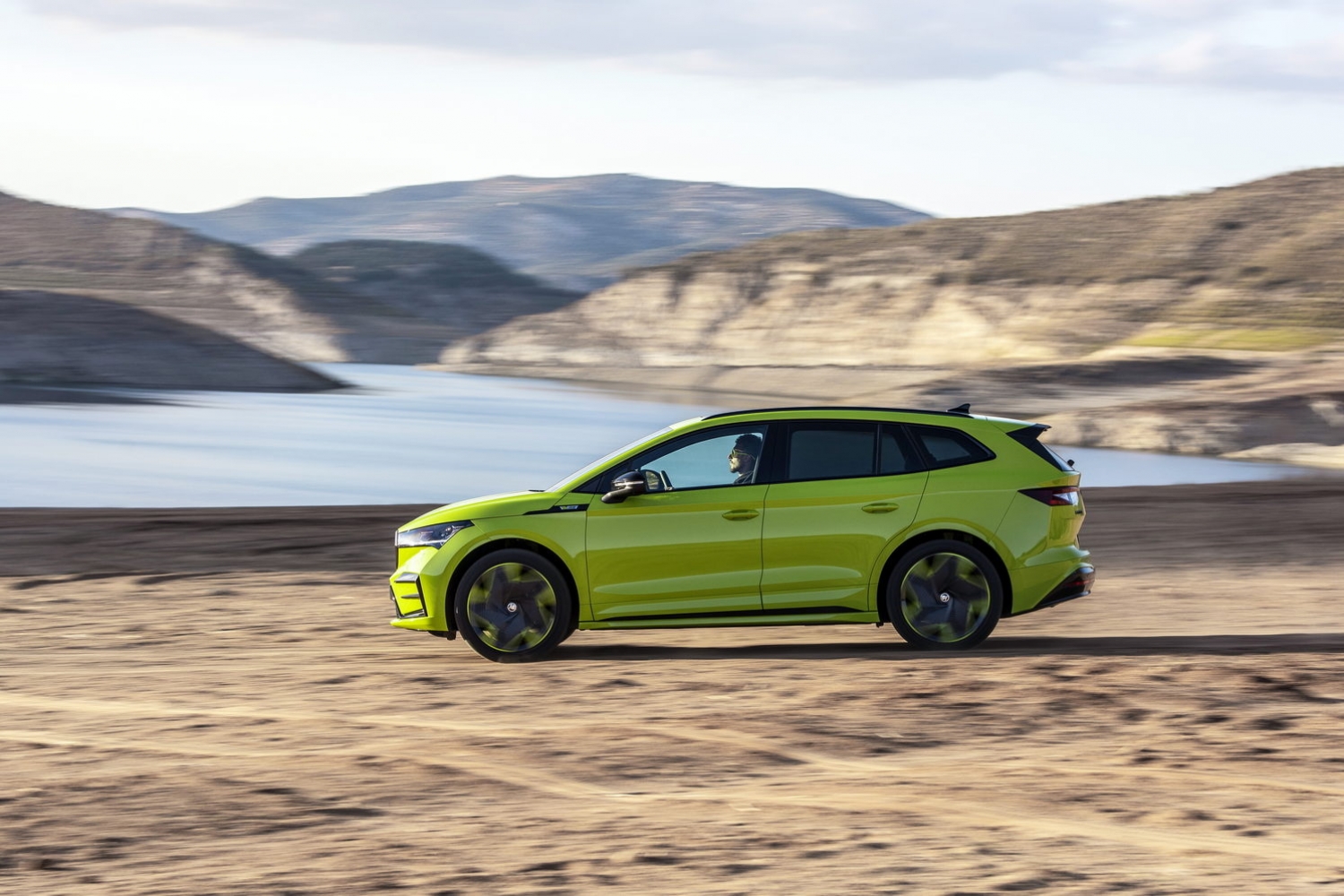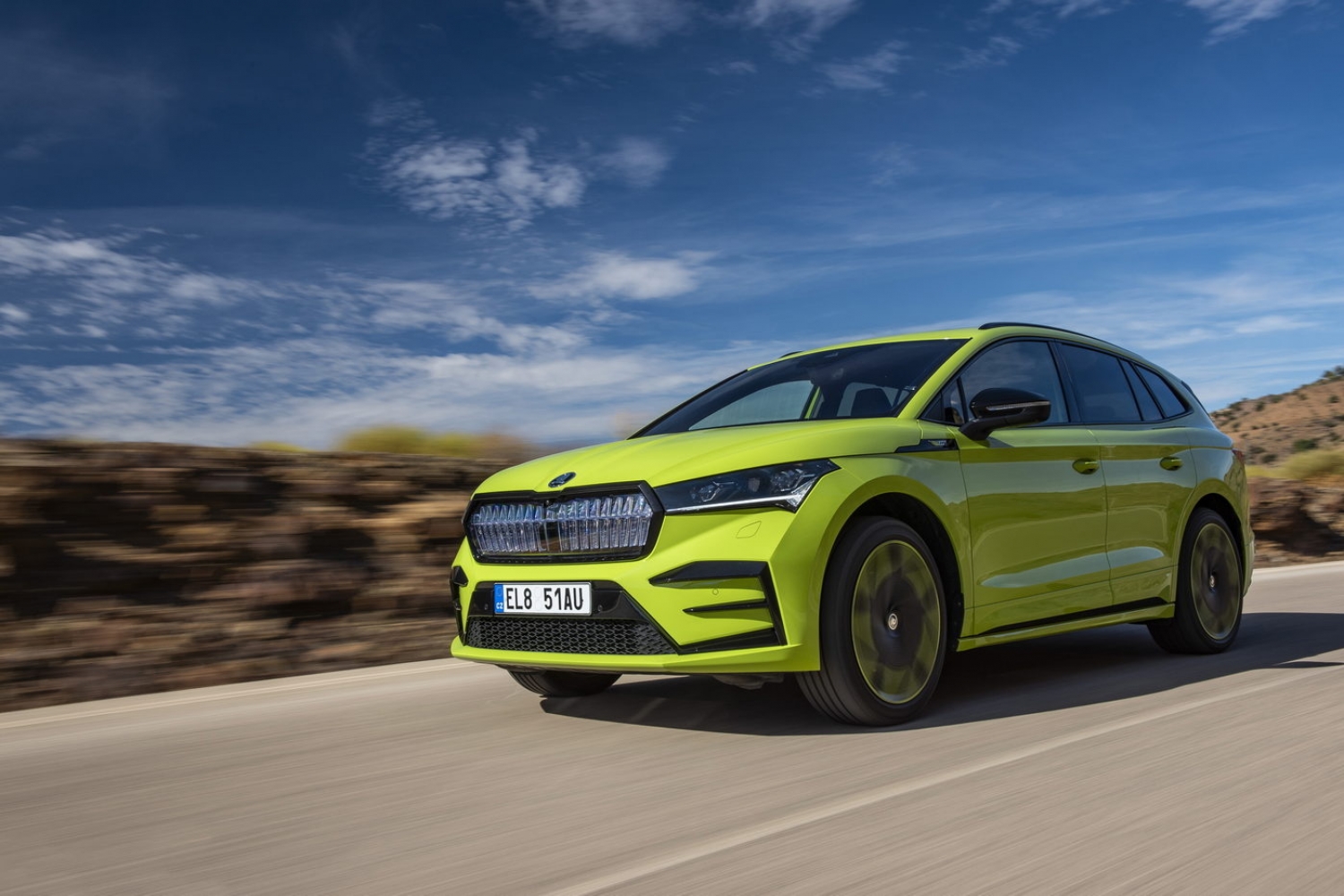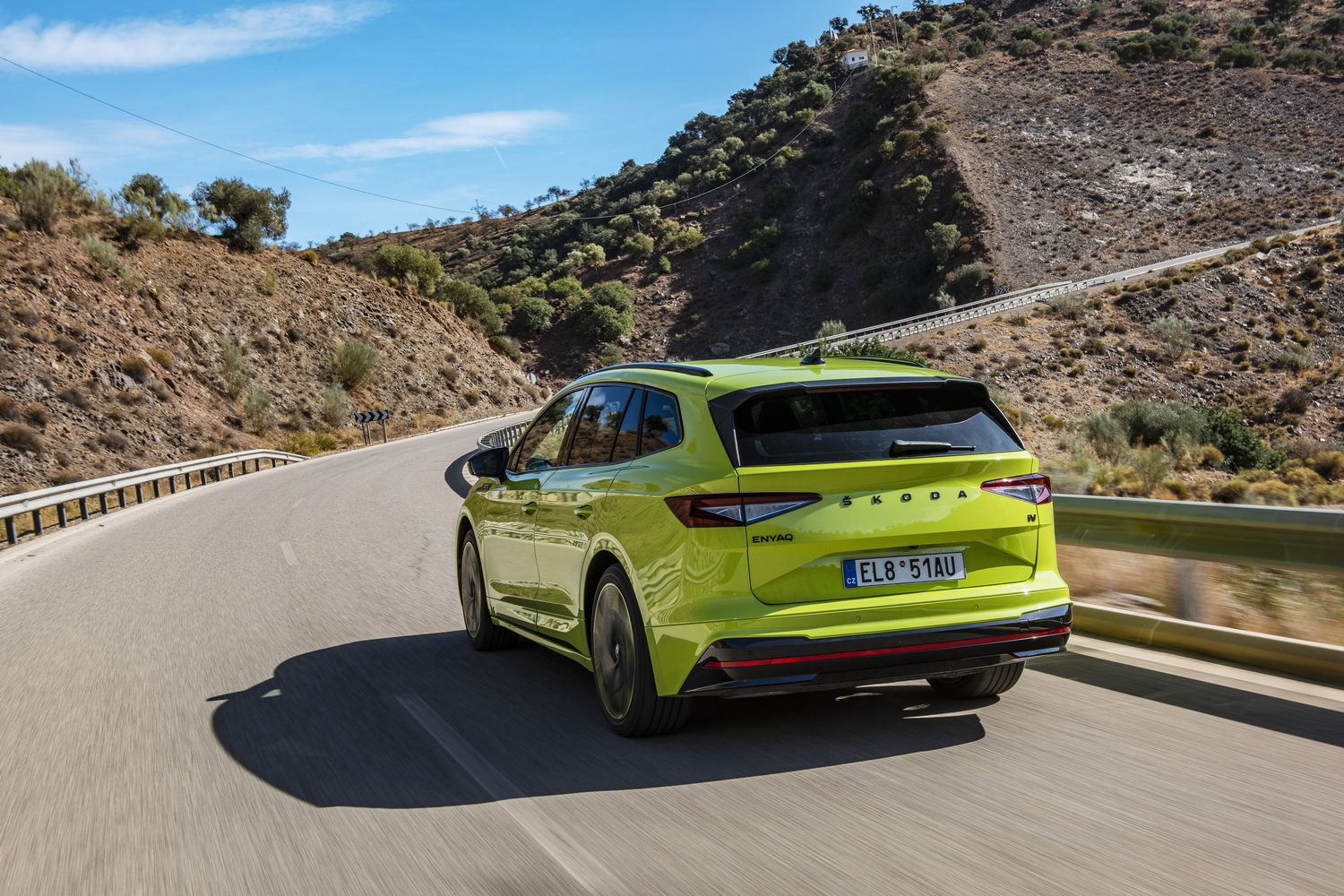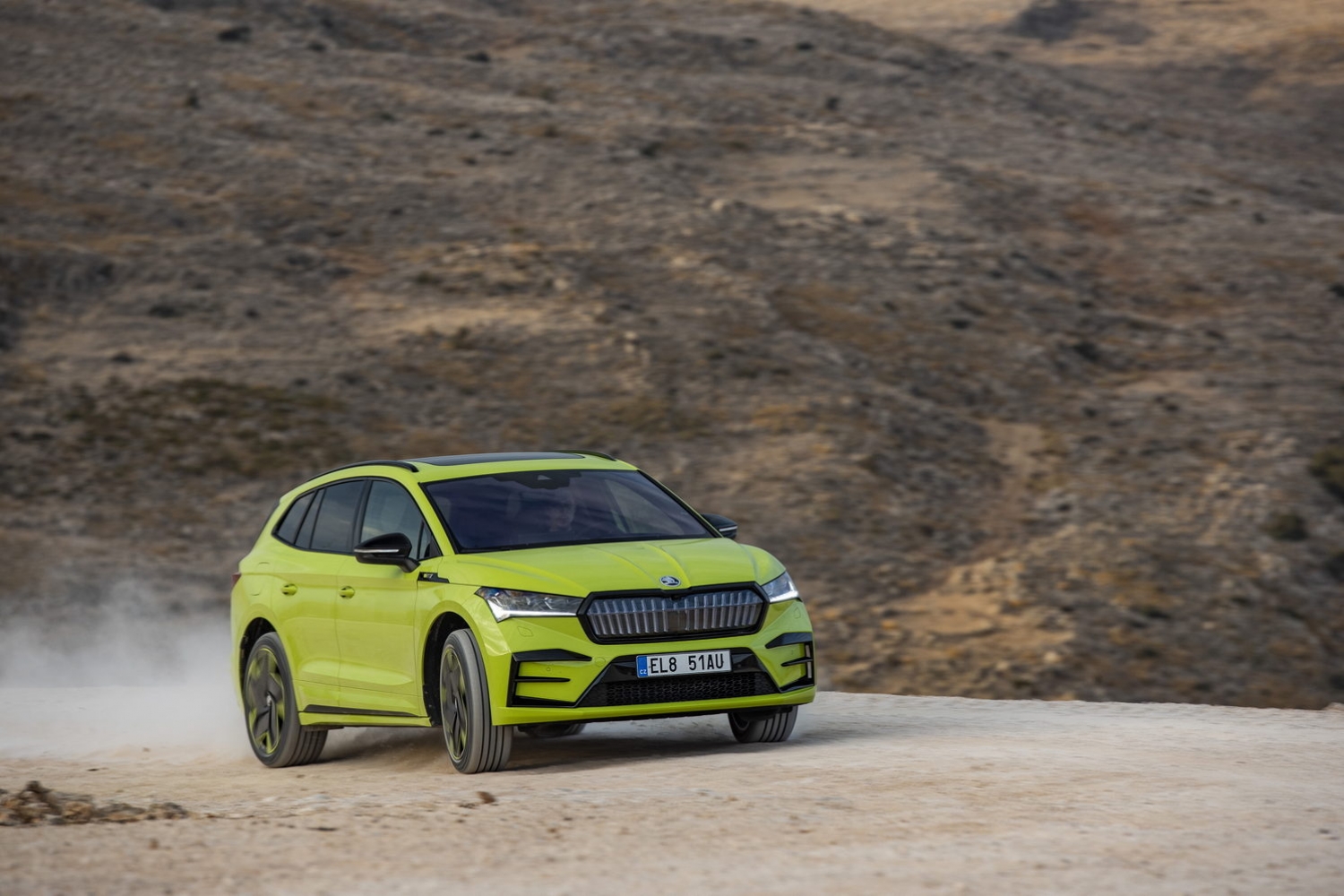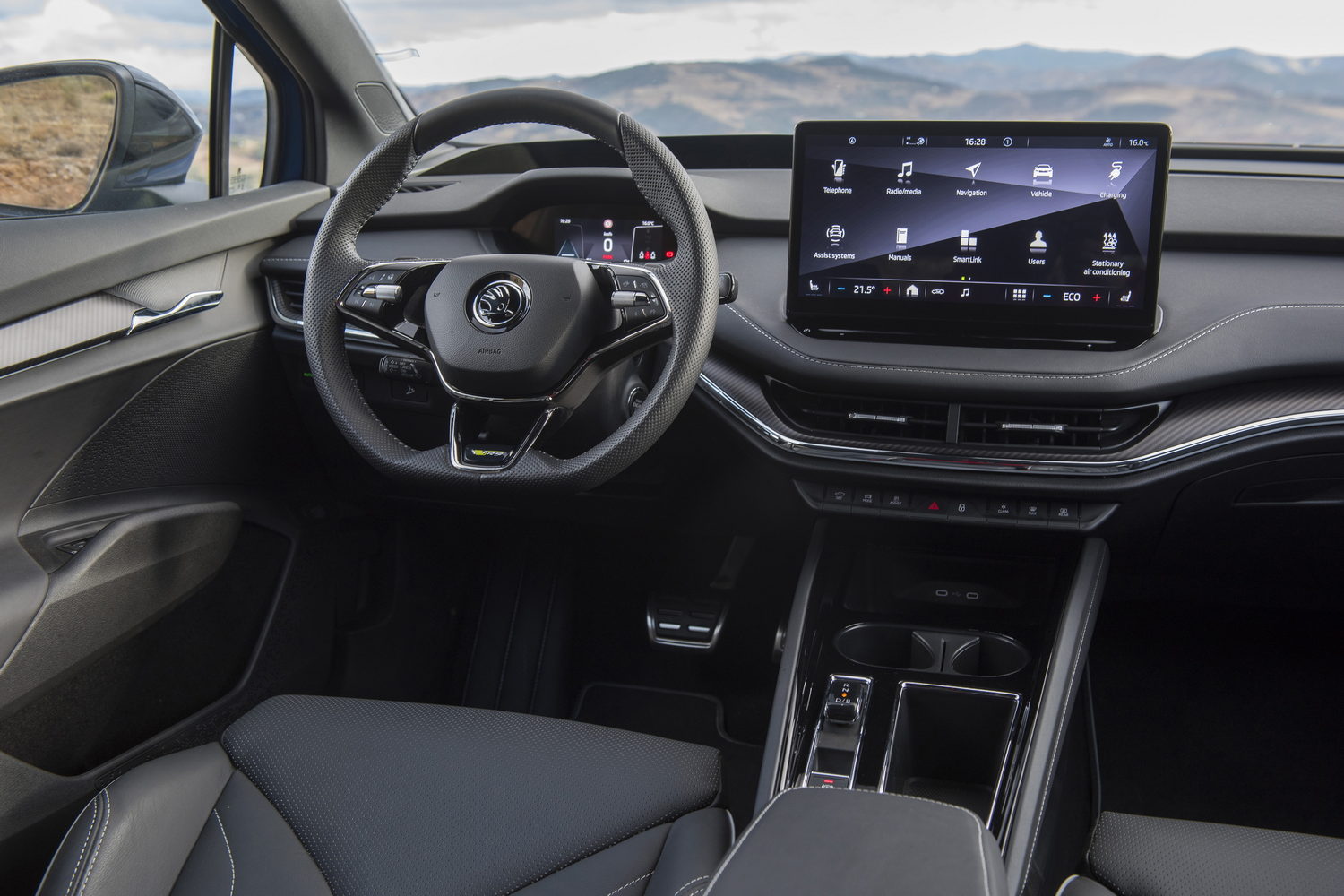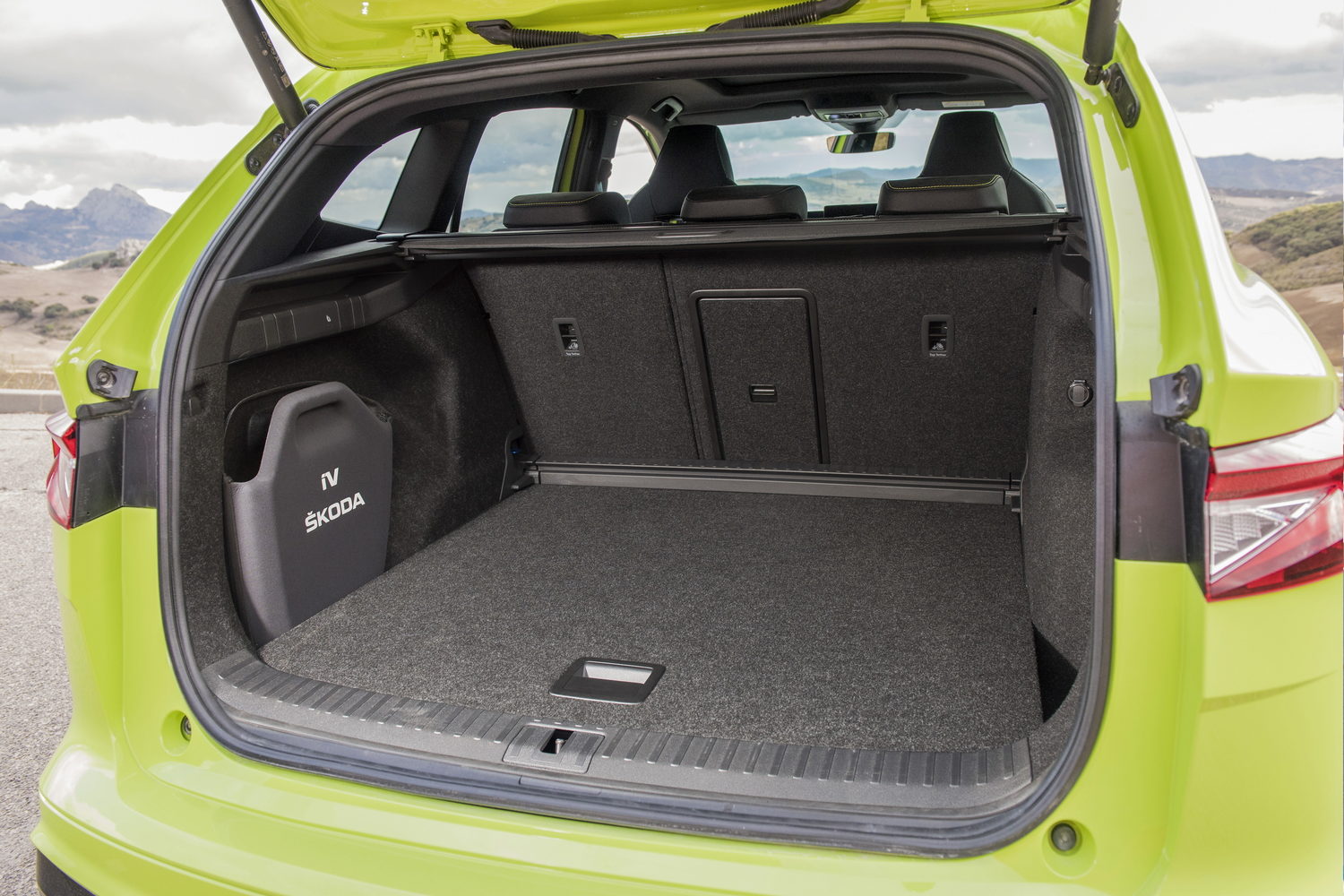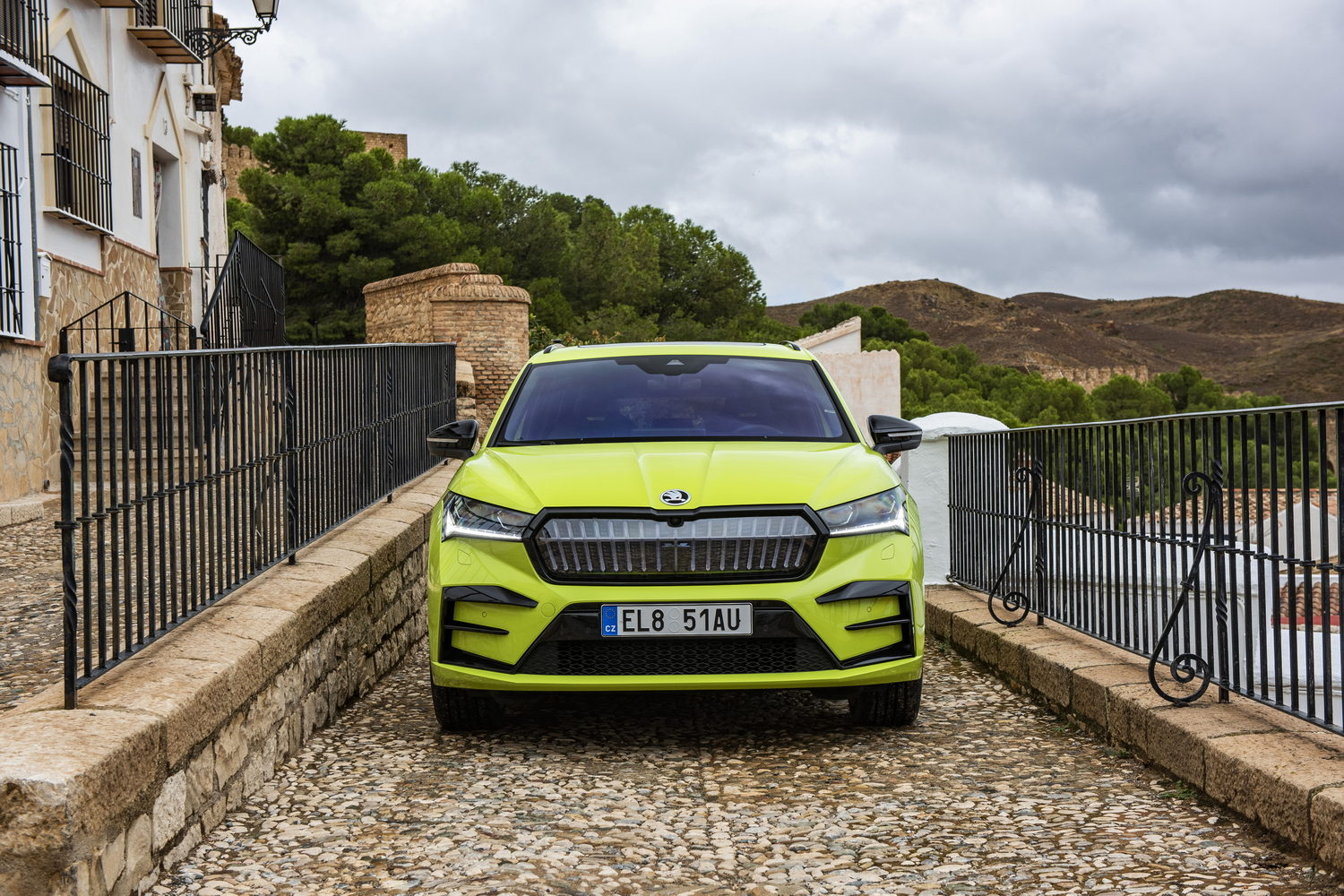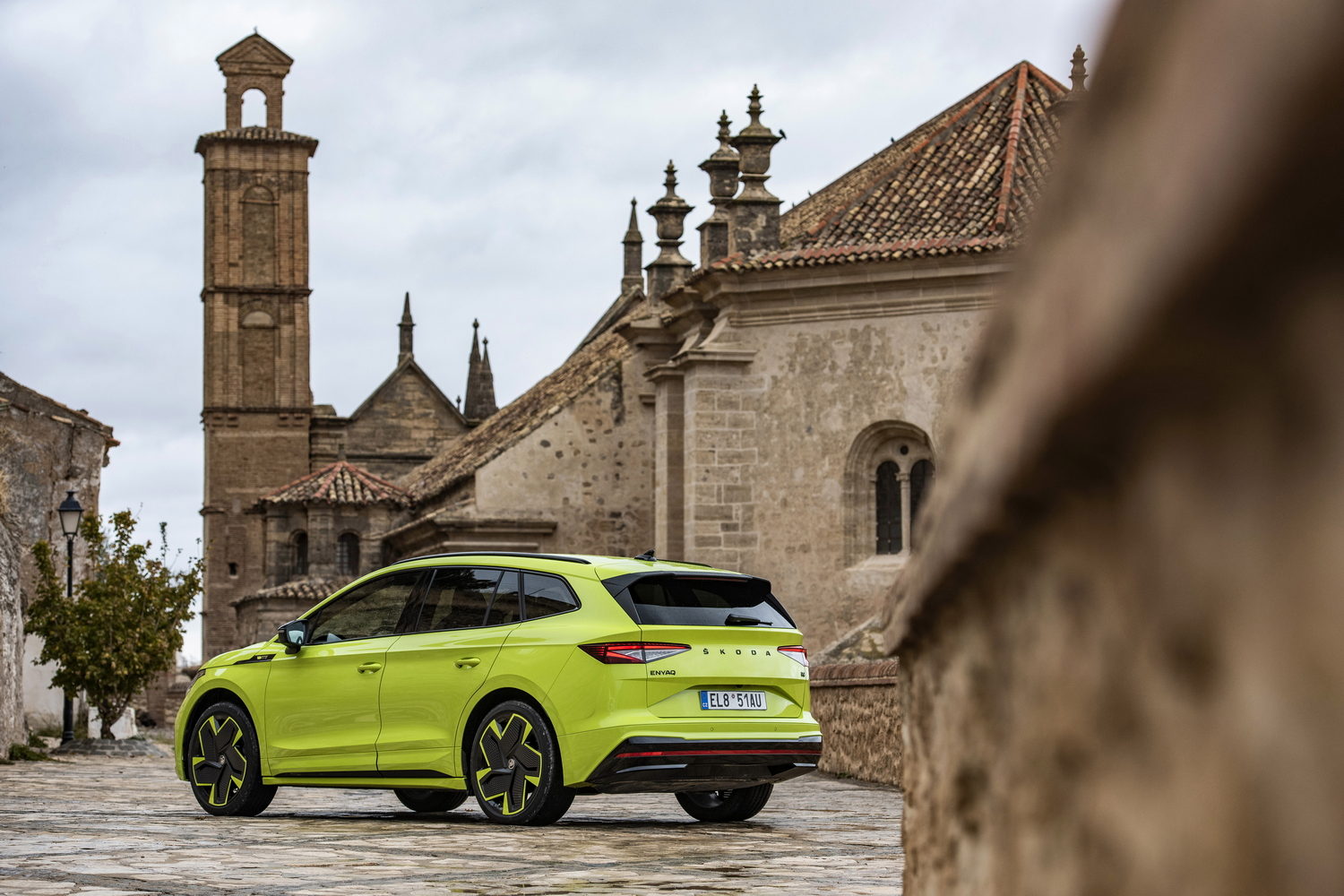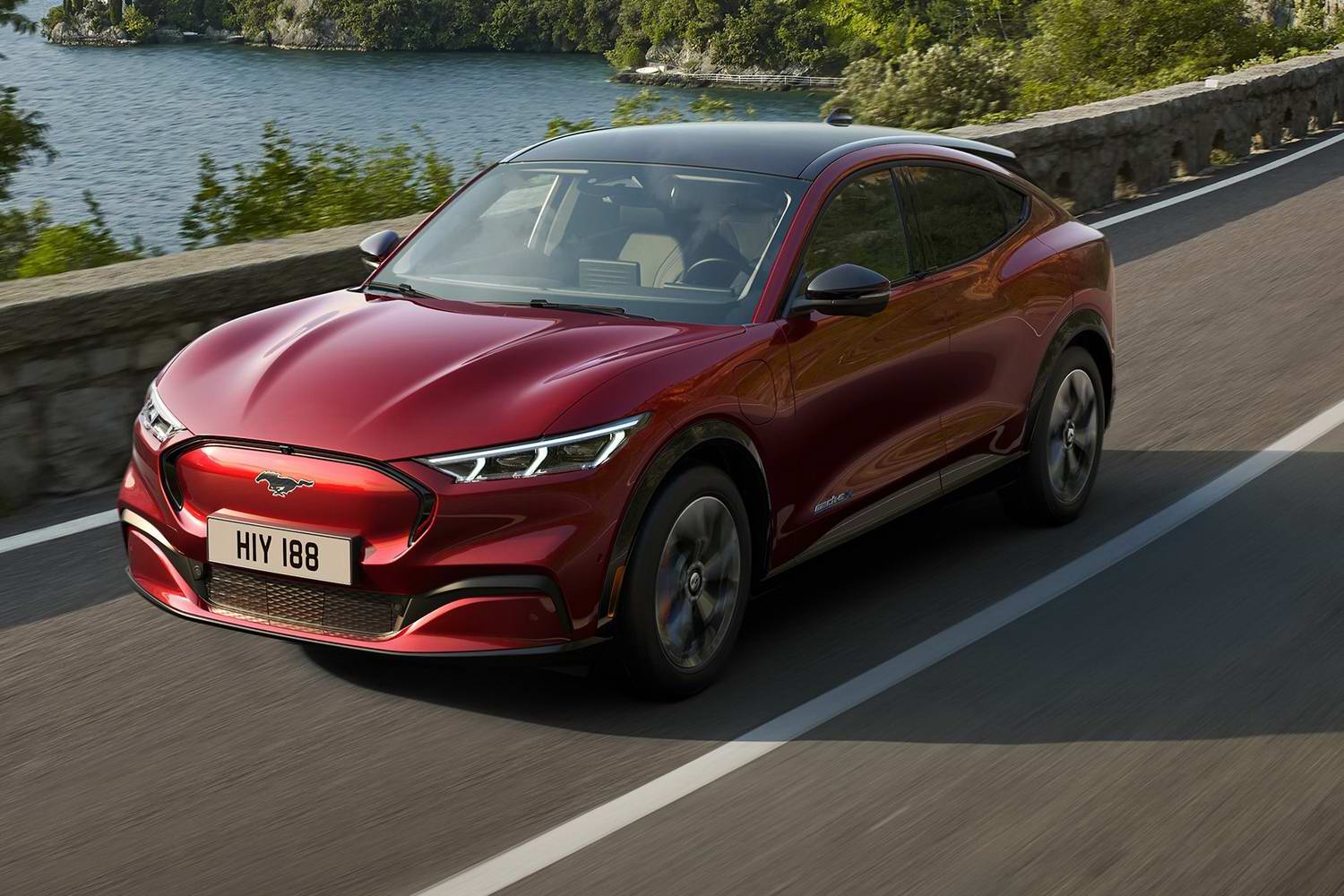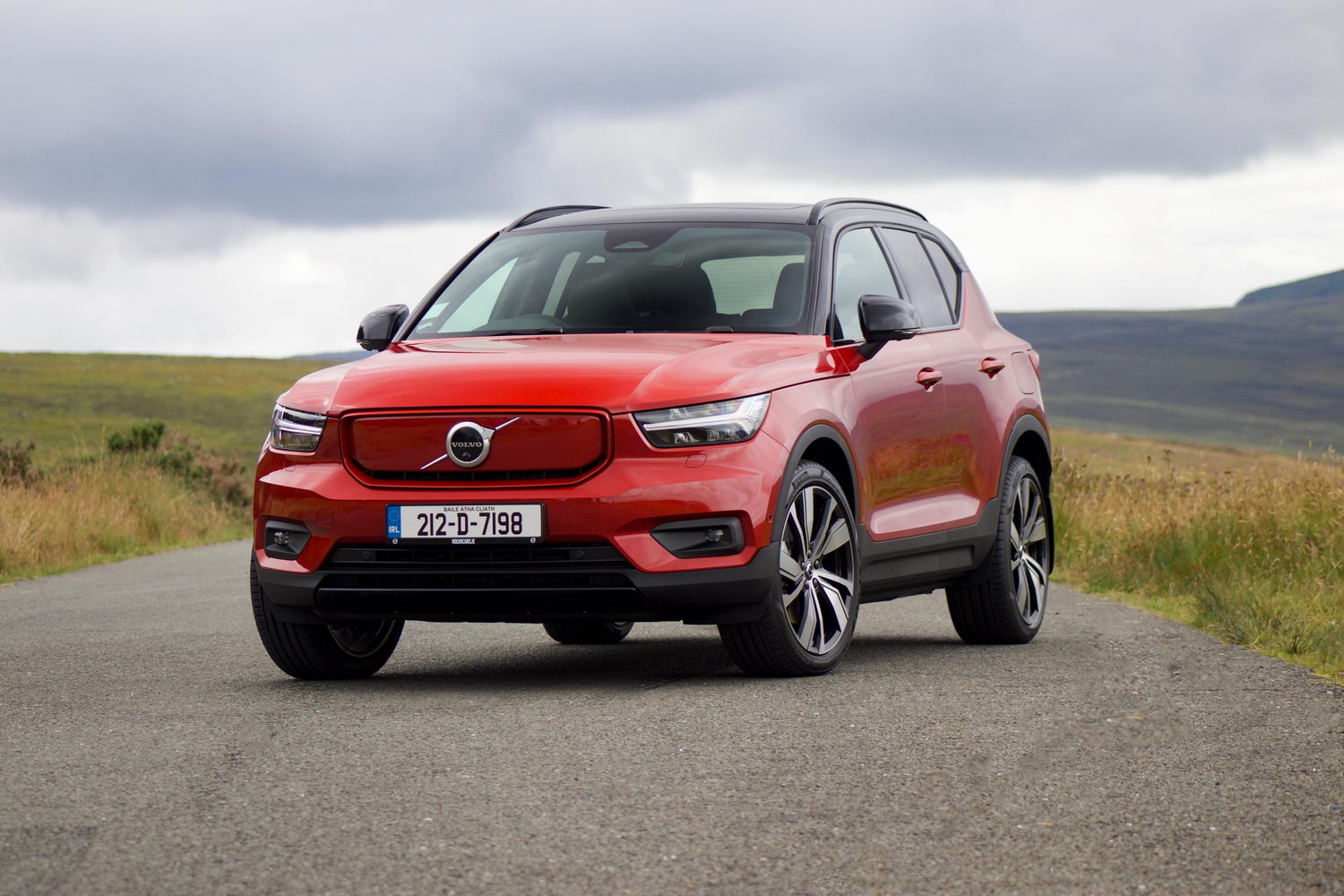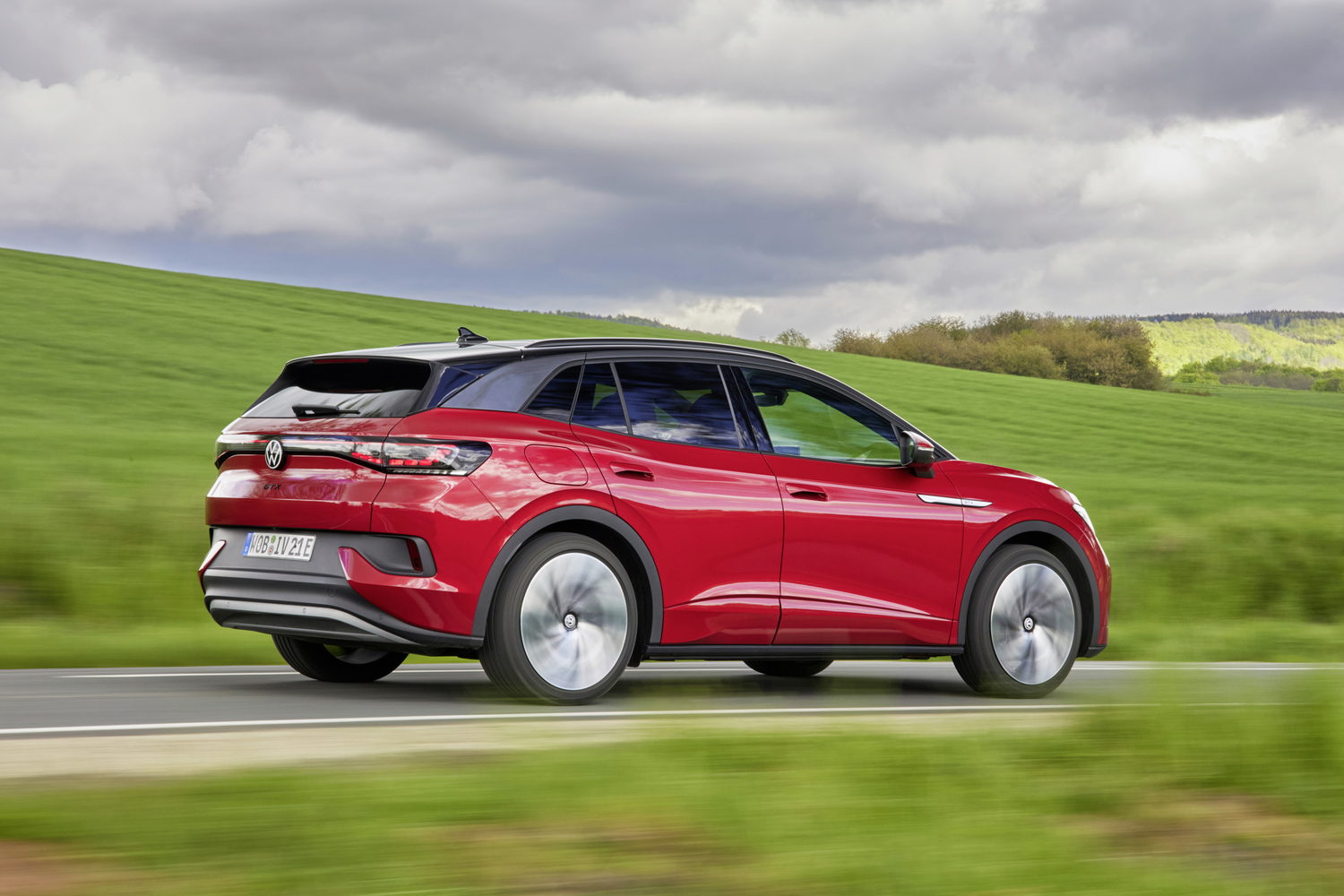There was something inevitable about the Enyaq RS. With a critically acclaimed electric SUV on its hands, Skoda always seemed likely to put some pep in the Enyaq's step and create a more powerful, more driver-orientated version. What was less inevitable was that the RS would debut as the Enyaq Coupe, rather than the standard SUV. Nevertheless, that's what happened, and the Enyaq RS iV SUV follows hot on the heels of its fastback-shaped sibling. So will the SUV shape prove as compelling as its more stylish sister, and will the RS be the Enyaq of choice for Irish customers?
In the metal
Like the Enyaq RS iV Coupe, the more conventionally shaped RS comes with a few design upgrades compared with its more mainstream stablemates. Most noticeable is the 'Crystal Face' grille, which replaces the Enyaq's usual black plastic arrangement with an LED grille design that's illuminated by day and night. It won't be to everyone's taste, and though it's an (expensive) option for the Sportline versions of the Enyaq, it's standard on the RS.
That isn't the only differentiator, though. The RS trim is loosely based on the existing Sportline specification, so the Enyaq gets glossy black trim around the windows, and it sits on the same lowered suspension. However, Skoda has introduced more aggressive bumpers for its range-topping model, even adding a red rear reflector as seen on other RS cars.
But Skoda has shied away from making too much fuss about the RS name. Although this is the brand's first RS-badged electric car, the logo only appears on the little vent-style panels on the front wings. Unlike an Octavia RS, there's no badge on the tailgate or on the front grille. It's almost as though the brand feels a bit shy about calling this a RS.
Inside, the RS additions are similarly subtle, with the badges only really appearing on the digital displays and the optional head-up display. Nevertheless, there are some sporty additions, such as the suede trim on the dashboard. Again, the RS is based on the Sportline version of the Enyaq, so it gets the same massive touchscreen, the same digital instrument display behind the steering wheel and the black roof lining.
RS customers also get a choice of upholstery for the sculpted sports seats, with the Lounge option providing green-flecked suede trim, while the Suite alternative gets full leather with grey contrast stitching and piping.
Whatever you go for, the RS is essentially an Enyaq, so it gets the same curvy dashboard, the same impressive build quality and the same technology. If we're nit-picking, some of the plastics are a bit of a let-down and the digital instrument display feels a bit fussy, but overall the cabin is more stylish than that of the closely related Volkswagen ID.4. And the engineering is every bit as solid.
The big central screen is sharp and responsive, but while it looks brilliant, it's fiddly and tricky to use on the move, with important controls hidden beneath layers of menus and diagrams. This is an Enyaq issue, not a RS-specific problem - but it rankles all the same.
What makes it worse is Skoda's decision to usurp physical switchgear with touchscreen technology - you don't even get a volume knob - and then leave that technology wanting.
That said, the optional head-up display is brilliant. It projects a huge image onto the windscreen, allowing it to make use of augmented reality tech that picks out other vehicles or even the white line on the road, and shows you where to turn at junctions, as well as offering more conventional features such as turn-by-turn instructions and a speed display.
And while we're on the subject of good news, there's plenty to be said for building the RS in SUV form. Because the switch to RS power has taken none of the car's practicality, it still has a huge 585-litre boot and ample rear space. In that, it's noticeably more useful than the Coupe, even though there's only 15 litres in it in terms of official luggage capacity. But the less rakish roofline means there's a little more headroom in the rear and the Enyaq becomes more capable of carrying four adults in comfort.
Driving it
The Enyaq RS iV shares its all-electric powertrain with the VW ID.4 GTX. In fact, the two cars are largely identical in mechanical terms, so the RS has the same two-motor, all-wheel-drive set-up with a 77kWh battery beneath the floor. There's 299hp and 460Nm of torque, giving the car a 0-100km/h time of 6.5 seconds and a top speed of 180km/h.
Perhaps more importantly, the RS has a 517km range, which means a single charge will allow it to cover much the same amount of ground as the less powerful 80x model - the only other all-wheel-drive option in the Enyaq range. However, with 265hp on offer, the 80x is very slightly slower to accelerate.
On the road, the two cars feel even less distinct than the figures suggest. Both feel similarly fast, with an indiscernible 0.4 seconds between them in terms of 0-100km/h times, and both will realistically cover around 400km on a single charge. Both can be charged at 135kW, too, which means a suitable charging point can recharge the battery from 10 to 80 per cent in just over half an hour.
Skoda has given the RS the same chassis set-up as the Sportline versions of the Enyaq, which means the car sits 15mm lower than standard at the front and 10mm lower at the rear. As a result, the RS drives in much the same way as the Sportline, which means it's a little firmer than the standard Enyaq, but it's still comfortable.
Admittedly, it does thump into potholes a bit at lower speeds, but it's much smoother at higher speeds. As a motorway cruiser, it performs admirably, despite our test car being fitted with optional 21-inch alloy wheels that replace the standard 20-inch rims.
And that comfort can be improved upon with the Dynamic Chassis Control system that's available as an optional extra. This allows the driver to tune the car more finely for the conditions, and it provides a new Comfort mode on the drive selector system, slackening the suspension for extra softness. At least that's the idea - we can't comment on whether it works because we're yet to try an Enyaq fitted with the system.
In spite of the comfort, the Enyaq also provides admirable body control, with relatively little lean in corners for a car of its size. It isn't the most exciting car in the world to drive, though, with slightly numb steering that's perhaps a little too light. We experienced a slight lack of grip from the front tyres, too, although that could be down in part to the slightly damp roads on our test route and the eco-focused tyres. Nevertheless, the Enyaq will provide ample stability and enjoyment for most drivers, who aren't likely to explore its limits too often - even in this faster version.
While the RS may be a fast version of the Enyaq, it can also go off-road, with all-wheel drive and plenty of ground clearance despite the slightly lowered suspension. It's no mud-plugging 4x4, but it has a clever traction setting to help you get moving in the snow and it should cope with farm tracks, muddy fields and the like. Especially if you fit some all-season tyres, although we don't know what that would do to the range...
What you get for your money
Irish prices have not yet been announced, but the RS is not expected to cost much more than the current range-topping Enyaq. With that car - the Sportline 80x - coming in at €67,695, we'd expect the RS to be priced at around €70,000.
For that money, you'll get plenty of goodies, including the Crystal Face grille, the RS styling and the 20-inch alloy wheels. All the usual Enyaq features will be included, too, such as the touchscreen navigation system and digital instrument display.
Summary
In many ways, the Enyaq RS is very good, but we couldn't help but feel a little disappointed with Skoda's supposedly high-performance take on its electric SUV. The RS doesn't feel much faster or better to drive than the standard all-wheel-drive Enyaq, and as a result it feels more like a high-end trim level than a 'hot' Enyaq. It does come with a snazzier cabin, though, and the Crystal Face grille will probably be enough to tip the scales for image-conscious buyers.

